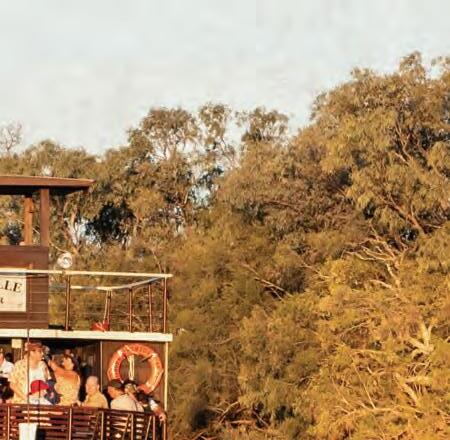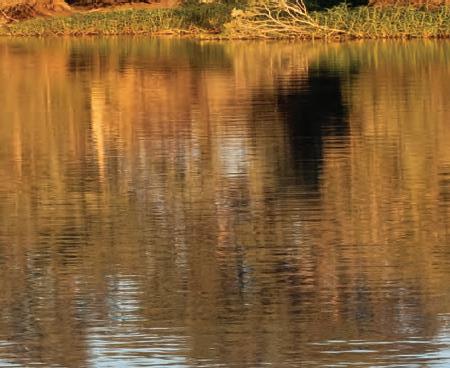















CULINARY DELIGHTS FROM THE MOUNTAINS TO THE OCEAN



















CULINARY DELIGHTS FROM THE MOUNTAINS TO THE OCEAN


WHY THE WAY SENIORS ARE PORTRAYED IN THE MEDIA AND EVERYDAY LIFE NEEDS TO CHANGE






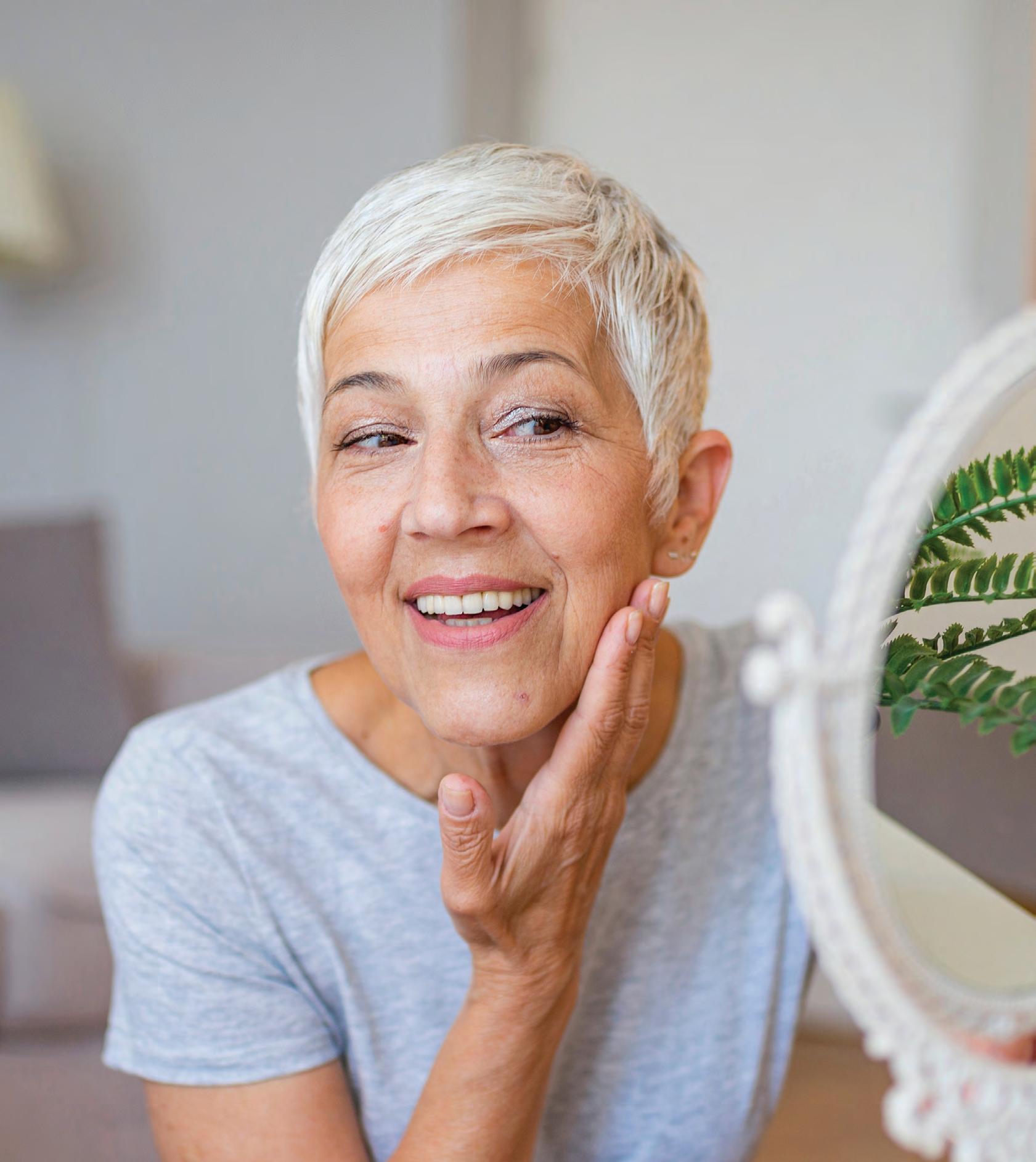








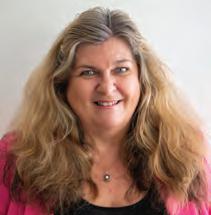
Stereotypes, prejudice, bias, generalisations … when it comes to perceptions of people, we can mistakenly tar demographic groups, genders and even nationalities with the same brush.
We’ve all heard of the ‘ugly Australians’ behaving badly on tour. Well, I am starting to believe that you can take just about anyone out of their own country, put them in holiday mode in a foreign land and sometimes bring out the worst in them.
I’ve just returned from a holiday overseas, where ill-mannered behaviour and downright mean-and-nastiness marred a cruise in the last week of the trip. One nationality of European tourists, in particular, was at fault. Their rudeness while the rest of us waited patiently in line, their loud conversations with no regard for those around them, rushing past others to take the lion’s share of available seating, piling mountains of food on plates at buffets, physically pushing, shoving and elbowing … many people were complaining. I’ve now put it down to survival mode – especially given the
summer crowds in the Mediterranean this year. I realised that I shouldn’t think badly of all that particular nation’s people.
It’s a bit like tired old perceptions of retirees and seniors. It may be 2024 but we’re often lumped into ageist categories, stereotyped as weak and vulnerable or ditherers and slow on the uptake, and ignored largely by retailers and marketers who can’t see past long-held assumptions of buying power.
We often aren’t seen as individuals with a lifetime of experience, knowledge and capabilities. We have had to deal with far more technology in our day-to-day lives than our parents or grandparents did at our age, adapt and pivot in our jobs as a result of the fallout from Covid, and learn to live without the respect we, as youngsters, afforded our elders. Often, we are competently doing the same jobs as younger people (sometimes better!).
As reporter Janine Hill discovers in this month’s cover story, over-55s are far more savvy than we are given credit for. Truly, we are older and wiser. But old stereotypes die hard, and it can be easy to be limited by other people’s expectations.
On a brighter note, nothing stops travel writer Nannette Holliday, who indulges in fine fare in Sri Lanka.
It’s another big read this month, so let’s get started!
Shirley Sinclair Editor

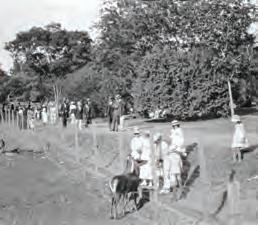



DISTRIBUTION ENQUIRIES distribution@yourtimemagazine.com.au or call 0419 746 894
PUBLISHER Michelle Austin 5493 1368. EDITOR Shirley Sinclair, editor@yourtimemagazine.com.au
ADVERTISING ENQUIRIES 0438 717 210, sales@yourtimemagazine.com.au.
FOR DIGITAL EDITIONS AND MORE yourtimemagazine.com.au.
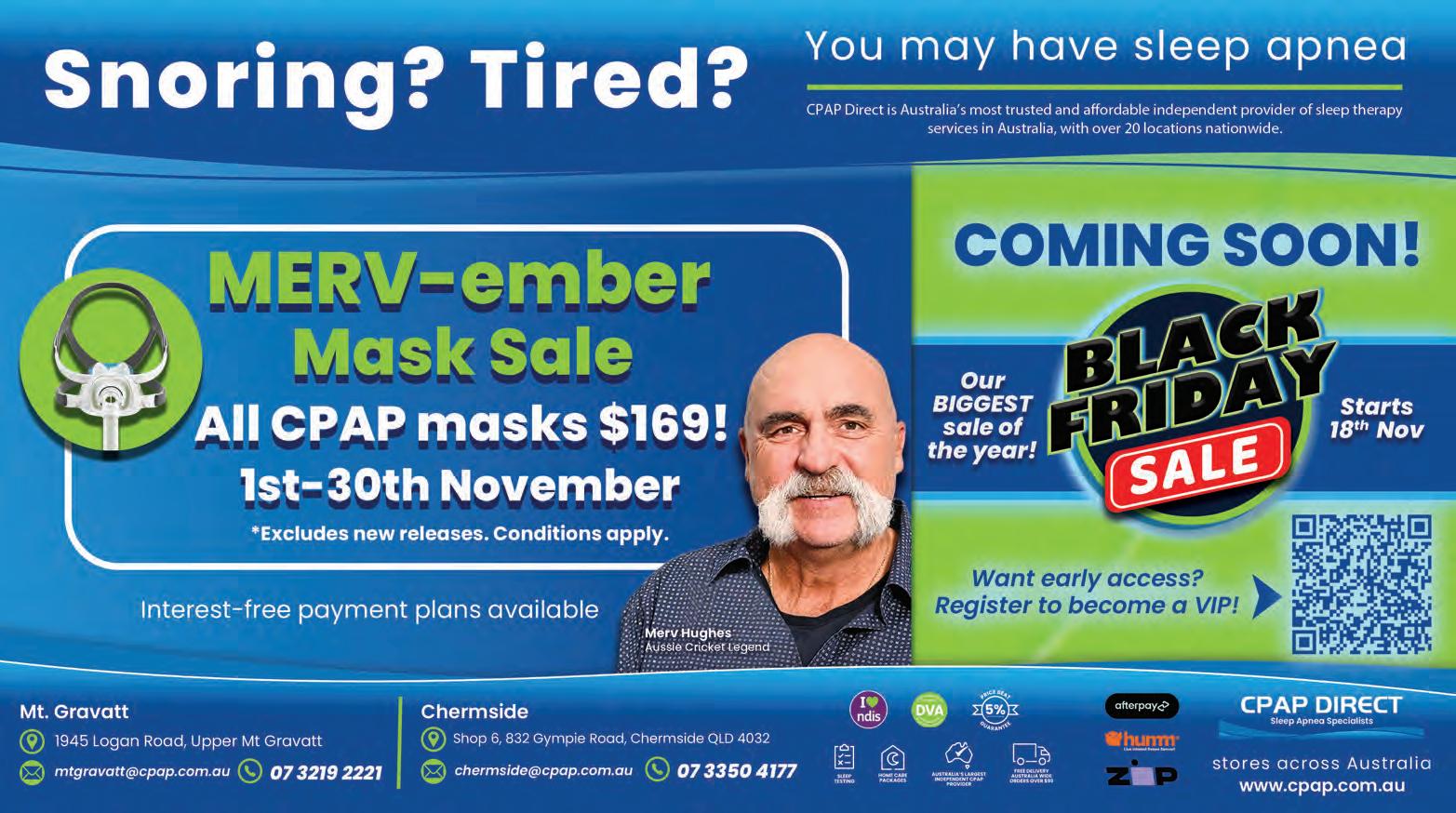

JANINE HILL reports that when seniors are wrongly portrayed in a negative light in the media, the masses may believe those descriptions and opinions to be true.
A70-something woman auditions for a voice role in a commercial. She receives compliments from the room but is told the client will make the final decision.
A call comes a few weeks later. It’s a knockback.
Although she is in the demographic group the advertisement will target, she does not sound ‘old’ enough for the part. She takes it as a complement and

pockets some cash for her travelling expenses. But how old is old?
Full of verve, she lost out to someone with a thinner, wavery voice – someone who sounded ‘old’.
Dr Andrew Hughes, a lecturer in marketing at the Australian National University, is concerned about the way older people are portrayed in marketing and advertising.
Dr Hughes has seen it countless
times before: the grandmotherly or grandfatherly type who has little purpose outside the home.
“A lot of our ideas, and lot of our marketing and advertising material, is based on a very outdated perception of older people,” he says.
He blames those on the other side of the generation gap for the way older people are presented in the media.
“A lot of the portrayal of older
people is done by younger people,” Dr Hughes says.
“And their ideas are often based on personal experiences.”
Dr Hughes says those behind the marketing often have no significant exposure to older people other than their grandparents.
Grandma baking biscuits or grandpa tinkering in his shed does not constitute a complete picture of them as people or of their lives, he says.


“They get this idea that older people are retired and doing very simple, at-home tasks – as though they don’t have a mind”
“They get this idea that older people are retired and doing very simple, at-home tasks – and it’s as though they don’t have a mind,” he says.
Dr Hughes likes to set his young students an exercise which involves them sitting down with their grandparents and asking questions about their lives.
It is not compulsory, because he knows that some do not have grandparents or that family relationships or distance might constrain contact, but it is a positive experience for those who do.

“I get some really surprised people who realise once they sit and talk that ‘just because they are older than me, and their bodies are starting to fall apart, doesn’t mean that their mind is’.”
Darren Young, chief executive officer of the Queensland Council of the Ageing, is also concerned about a narrow portrayal of older people.
He takes issue with news reporting, which he says does not reflect the full spectrum of ageing or older people.
“What I would say is that the media, in general – and, particularly, the news media – under-report older people ... and that it often frames older people in the light of dependence and being past their prime,” he says.
“People are seeing older people in a negative light, as valueless, dependent on the system and dependent upon others.
“That’s probably a negative view and we’re further marginalising older people when all the messaging out there is about valuing youth.”
Mr Young says media reporting of ageing tends to be limited in range and
older people and keeping other people from getting the care they need, stories that portray older people as a burden on society.
“We are seeing that a lot. There was a study last year, and I think it was done mainly of news outlets. It was of something like 700 news articles and two-thirds of the stories were all about nursing homes and funding for nursing homes and problems older people were experiencing.
older people should be incapable.
Author Anna Johnston has also picked up on a subtle form of ageism: able-ism, where older people are considered interesting or valued because they carry on with youthful traits or abilities.
She said society still idolised youth, and older people were encouraged to ‘erase’ the signs of ageing by dyeing their hair or smoothing out wrinkles.
Ms Johnston, whose humorous novel The Borrowed Life of Frederick Fife focuses on an 82-year-old man and a case of mistaken identity, says less than three per cent of main characters in literature are over 80.

“People looking at this through a community lens are only seeing the very negative view of the older population. It’s basically portraying older people as very needy and, if it’s not doing that, it’s telling stories of older people being valueless and decrepit.
“If we look at news as the big way people get to understand the world, I think there’s more could be done.”
But Mr Young says the problem is not just the news, but what else is on our screens.

“I wanted to show not just an older character but an older hero who inspires hope”
propels images of older people as a burden or victims.
“We are not seeing some of the stories that probably could be showing a great diversity in the experiences of older people,” he says.
“We’re seeing stories about the extraordinary costs of aged care, hospital beds that are being taken up by

He says the main age range depicted on Australian television drama is 18 to 44, and although 15 per cent of the population is over 65, only 6.4 per cent of the people on TV are in the same age group.
“It’s not telling the real-world experience of the community. It’s not telling the real story of older people and their experiences,” Mr Young says.
He says the images being reflected of older people in the media, and the views of the community, could be disempowering.
“What’s going to happen is, that’s going to influence older people’s view of themselves and their views of people ageing.”
Mr Young says the occasional story about the achievements of an older person is often framed as happening “despite their age”.
That’s reinforcing the notion that
In her article, Beyond the Fountain of Youth: Embracing Authentic Ageing in the Media , she says the underrepresentation of truly old people sends a message about what society considers worthy of portrayal.
Ms Johnston grew up with her grandparents in the same house and worked at the same nursing home that her grandfather Fred lived in after being diagnosed with dementia.
While working in the nursing home, she was able to observe residents’ strength, resilience and ability to heal and grow, and the way her grandfather maintained his kindness to others –even with his failing memory.
It became important for her to use that in her book.
“I wanted to show not just an older character but an older hero who inspires hope and shows that worth, unlike eyesight, does not diminish with age or declining ability,” she wrote in her article.
Ms Johnston aspires to be an octogenarian and hopes that, if she is lucky enough to reach that age, that there are stories to read about embracing ageing as a valuable and meaningful part of life.







Feeling overwhelmed and confused by so many op ons in Re rement Living and Aged Care? Not sure what the next step is or how to even start? We are here to help guide and support you on your journey toward Re rement and Aged Care.
Don’t navigate this journey alone. Reach out now for a personalised online or face to face discovery session.
mind starts with a

Aged Care Placement
Aged Care Funding Op ons
Downsizing and Declu ering Strategies
Real Estate Consultancy


RARELY do you find such a decadent getaway combo so close to home Spicers Peak Lodge at Maryvale on the Scenic Rim will host the Shaw + Smith exclusive wine weekend on December 6-8. Guests can explore the retreat through immersive experiences and participate in a wine masterclass led by renowned winemaker Adam Wadewitz. Executive chef Gareth Newburn also will present a degustation menu, with Shaw + Smith wines. At $5450 per suite, the luxury package won’t be for everyone. But if you’ve always wanted to stay at Spicers Peak Lodge or are a big fan of the wines, perhaps make this an early Christmas gift. Call 1300 253 103, or visit spicersretreats.com/ offer/shaw-smith-wine-weekend/.

HERE’S an easy way to learn more about Indigenous culture and bush tucker. Maleny Botanic Gardens and Bird World has partnered with some of the region’s Traditional Owners, the Jinibara People Aboriginal Corporation, and local cultivators Brush Turkey Enterprises to create new Bush Tucker gardens. Two separate areas of the expansive gardens have been planted with Indigenous plants used traditionally in cooking and medicine by the Jinibara Peoples. Plant descriptions outlining their use in Indigenous culture have been created to educate visitors about the wide variety of uses. Plants include Davidson’s plum, emu foot, aniseed myrtle, lemon myrtle, a variety of native mints, quandong, native raspberry and the remarkable lemon sherbet coleus, so-named because of the lemon sherbet aroma the plant exudes when touched. For more details, visit malenybotanicgardens.com.au

GREASE is the word – and always will be. And now it’s back, in an all-new, multi-million dollar production starring Patti Newton as the much-loved Miss Lynch, Bobby Fox as Vince Fontaine and the incomparable Marcia Hines as Teen Angel. One of the world’s mostloved musicals takes us all back to Rydell High with Danny, Sandy, Kenickie, Rizzo and the whole gang and a medley of unforgettable hits that defined a generation: Summer Nights, Sandy, Hopelessly Devoted to You, You’re The One That I Want, Greased Lightnin’ and Grease is the Word. Visit qpac.com.au
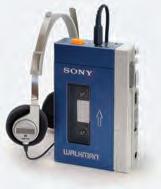
NOVEMBER 1979 is significant in the life of baby boomers – and not just because the Class of ’79 was about to graduate high school (I can’t believe that is 45 years ago!). The month marks the release of the Walkman cassette/radio: an invention that changed the way people listened to music and other audio. High fidelity went mobile for the first time, allowing people to ‘silently’ listen to their favourite tracks on the train, in the car, rollerskating down the street and in the library as if they were sitting alone in their lounge rooms. Covering both ears and being lightweight were key. And it started a trend that continues with today’s earbuds, earphones and noise-cancelling headphones. And no doubt on high rotation were some of 1979’ s biggest hits: My Sharona – The Knack; Do Ya Think I’m Sexy? – Rod Stewart; Heart of Glass –Blondie; Don’t Stop ’Til You Get Enough – Michael Jackson; Heartache Tonight – The Eagles; and Tragedy – Bee Gees.
WHETHER you’re a ‘believer’ or not, there’s no denying they’re crowd-pullers. Get ready for an unforgettable experience as the Two Psychics and A Medium National Tour kicks off in Brisbane on March 12 next year. The tour will showcase the extraordinary skills of three of Australia’s gifted psychics and a world-renowned medium: Annette Boyle, Anthony Grzelka and Julia Cartagena. Audiences will be treated to a one-of-a-kind live show that explores the mysteries of the spirit world. Two Psychics and A Medium promises to deliver an intimate and emotionally charged evening of spiritual connection, psychic readings and what they call messages from beyond. For more information and tickets, visit twopsychicsandamedium.com.au







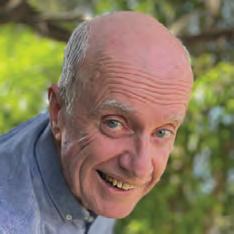
WE MAY take time for granted, but less so as we age.
While the 24-hour clock was introduced by military authorities to avoid confusion in telling the time, our modern computers, phones and Translink timetable still use ‘am’ and ‘pm’. It would seem whimsical for a visitor from another planet to find 11am is followed by 12pm.
They would also be bemused by the varied adoption by different states and territories of daylight saving, making cross-border dealings challenging.
Then, there is the confusion in dealing with the US style of expressing the date where they use the month, the day, then the year in their online documents.

century when railways appeared and a timetable was required, it was a foreign concept.
Most citizens lived in rural areas where they synchronised their day with the season, the sun and agricultural cycles – maybe relying on a sundial more than a timepiece which was an expensive item beyond the reach of most of the population. The gift of a gold watch at the end of an employee’s long service signified the status associated with personal timepieces.
To provide a shared benchmark of time, clocks were erected on public buildings. But, there was no guarantee that they’d be synchronised. The time in one town often differed from another by several minutes, still based on local cycles in the day. Standard time zones were introduced.
While standardisation of time may appear to be a given today, in the early 19th
No matter how we keep time, yesterday is the past, tomorrow is the future and today is a gift – that’s why we call it the present. Bouncing


















CHRIS CURRIE wanders back to a time when Brisbane’s much-loved city gardens were home to more than just a collection of interesting flora.
For many of us who enjoy the Brisbane City Botanic Gardens, it’s hard to imagine they once held a wildly popular collection of animals just don’t call it a zoo.
The story of its animal inhabitants can be told through the official reports, studies, photographs and newspaper accounts held at State Library of Queensland.
The Brisbane City Botanic Gardens were established in 1855, on the site of former government agricultural gardens, built to feed the then convict settlement.
The first recorded animal residents were three tortoises, donated in 1859 by John Clements Wickham, former magistrate of Moreton Bay. The (likely apocryphal) story goes that the tortoises were given to Wickham by Charles Darwin. One of the three tortoises, Harriet, lived to the ripe old age of 176, passing away at Australia Zoo, Beerwah, in 2006.
The gardens’ 1879 annual report reveals that the introduction of animals to the space was not an unusual occurrence, with a noted bird fancier “let(ting) loose a few Budgerygar parrots” which “appear to have taken
kindly to their change of location”. As early as 1890, concerns were raised in local newspapers as to why Queensland was “so far behind” southern colonies in “the matter of a zoological collection”.
A zoo of sorts began under the curation of Philip John MacMahon from 1889, with an enclosure for emus and an aviary. Two years later, much fanfare was given to the construction of a bear pit which housed two black bears from Japan for the amusement of onlookers.
A few years later, the idea of building a zoo in Brisbane gained further traction, with the formation of the Queensland Zoological Society.
The two favoured locations were Mt Coot-tha and Yeronga Park.
Despite the vociferous calls for a zoo, both the premier and the mayor of the day steadfastly believed money could be better spent elsewhere.
The botanic gardens continued to accept some animals over the next decade, usually through one-off donations, including cassowaries, deer, kangaroos, pelicans, curassows (tropical American birds), peacocks, blue cranes, sheep, monkeys and a “fretful porcupine” discovered in a South Brisbane woodpile.

By this time, according to then curator EW Bick (whose papers reside at State Library), visitors were now taking a “keen interest” in the zoological collection. In 1926, the gardens s ent a collection of zoological specimens to the Netherlands in an exchange agreement with Rotterdam Zoo – the first of many exchanges with zoos throughout the world.
By 1927, the gardens were registered as an ‘A-class zoo’, but only for the purposes of welcoming quarantined animals seized by the Customs Department (many of the ever-popular monkeys were reportedly once the pets of visiting sailors who didn’t want to pay
the £50 quarantine bond).
While Brisbane never established an official zoo, more than a million people reportedly visited what unofficially became known as Brisbane Zoological Gardens, with many holding fond memories of their visits.
It was closed in 1958 due to “conflicts of interest, the cost of upkeep of the animals and the poor state of the animal enclosures”.
Today the bear pit is a picnic shelter for visitors.
If you have any memories of materials relating to the Brisbane Zoological Gardens, contact qldmemory@ slq.qld.gov.au















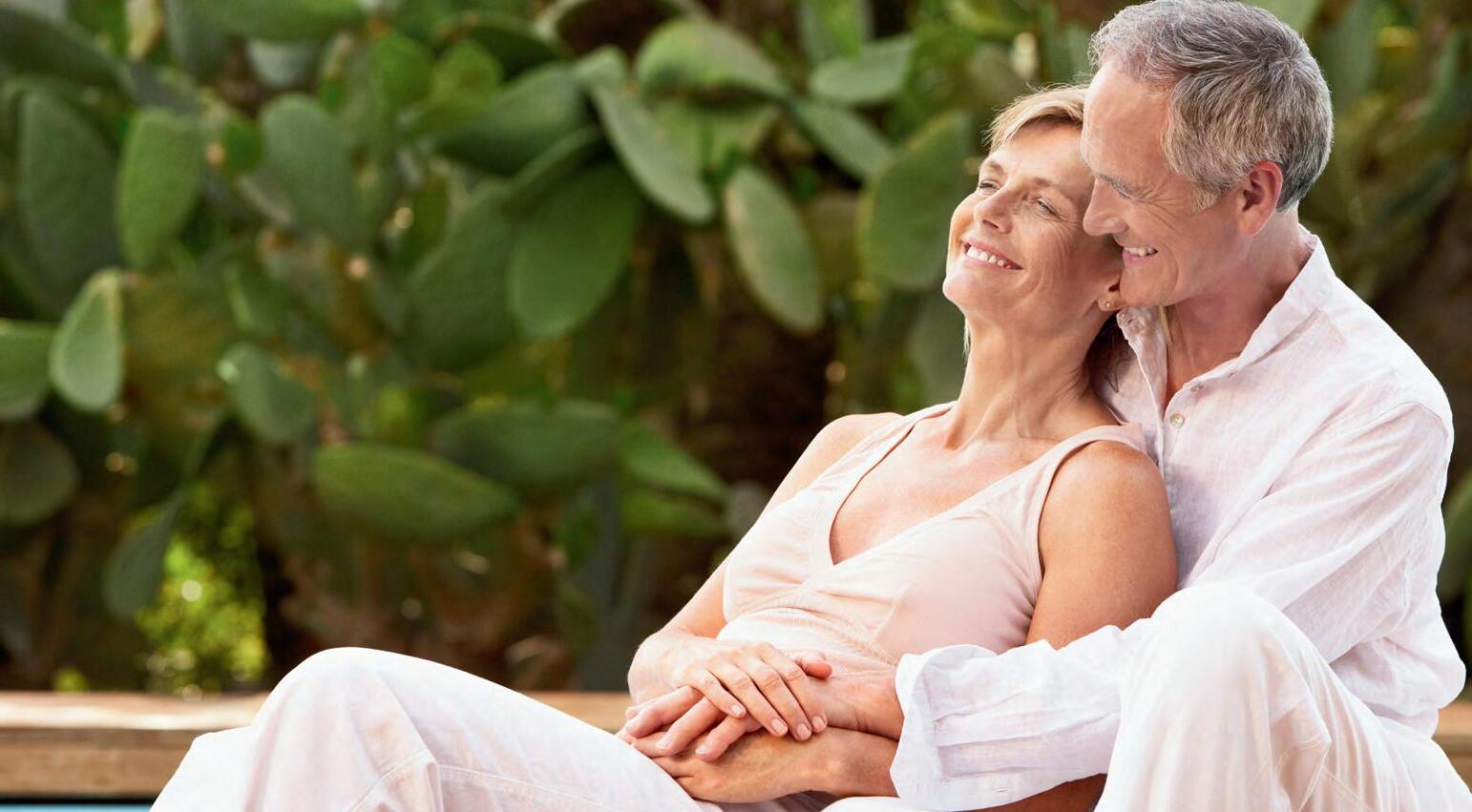


MILLIONS of Aussies are clueless about a financial decision that could impact their loved ones, new research by Finder shows.
A Finder survey of 1062 respondents revealed just five per cent of Australians have contributed to their partner’s superannuation.
Spouse contributions mean paying money into a spouse’s super during periods of low or no earnings or as a tax offset.
The research found a further five per cent didn’t know it was possible to contribute to their partner’s super.
The Australian Tax Office reports that as of the 2021 financial year, the average super fund balance for women between the ages of 65-69 was $403,038, and $453,075 for men of the same age.
Finder personal finance expert Sarah Megginson says taking time out of the workforce could seriously impact longterm returns on your super balance.
“Stay-at-home parents lose considerable superannuation in the child-rearing years, which then impacts in the long run into a loss of compounded earnings,” she says.
“If your partner is a low-income earner, you may be able to claim a tax offset on the first $3000 you contribute.”
Ms Megginson says it is important Aussies take their retirement nest egg
seriously. “Get educated about the state of your superannuation – what amount you have and how it’s invested,” she says.
“It can be really hard to manage extra super contributions in an environment of rising household and mortgage expenses but it’s important to plan for your future financial wellbeing, too.”
Ms Megginson says it’s not just about how many contributions you make:
“Choosing a top-performing fund could boost retirement savings significantly.”
Finder’s research found a worrying one in 10 (10 per cent) don’t have any superannuation.
TIPS TO MAKE THE MOST OF YOUR SUPER:
• engage in your finances. The best investment you will ever make is an investment in your own financial literacy. Learn how to do a budget, as well as the basics of investing.
• plan for potential career breaks. If you’re out of the workforce or working parttime for a period due to raising a family, plan for this if you can by making extra contributions to your super. Even a small contribution each month can make a big difference.
• start early and stay consistent. The power of compound interest is like magic for your retirement savings. Contributing regularly to your superannuation fund over an extended period can grow into a substantial nest egg..










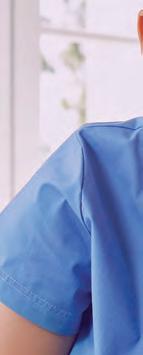










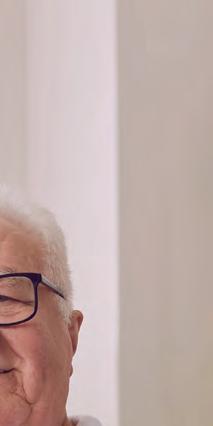

your need we offer quality and security with 24/7 Registered Nurses on-site.
Respite Care will be beneficial to you and your loved one to give you both peace of mind. If you require a break from your supportive role, please call our caring staff at either location.








EDIN READ offers a step-by-step plan of action if bogus ‘pop-ups’ try to attack your computer.
There seems to be a very common scamming attempt at the moment. A pop-up, which can cause a lot of damage, keeps appearing on clients’ computers. This pop-up says it’s from Microsoft and that the computer has been infected. In reality, this pop-up itself is the scam – and it’s not from Microsoft.
Let’s walk through what to do in case this happens.
Imagine this: you’re browsing the web, and suddenly your computer changes screens, displaying an alert claiming to be from Microsoft, stating that your computer has been infected.
A voice starts speaking, saying the same thing, and you’re unable to move your mouse or type anything. The screen instructs you to call ‘Microsoft’ on a strange number, and you can’t find a way to leave the screen.
The way to get out of it is reasonably simple, but in the adrenaline of the moment, it might feel like the only way to escape is to call the number. Do not, under any circumstances, call that number!
That number, in reality, connects to a call centre with people waiting to take calls from distressed victims. Stay on the line
long enough, and they will get you to download remote-access software, which enables remote control from wherever they are in the world. Then, they’ll either a) make a transaction online and steal your details or b) ask you to log into internet banking, where they will falsify accounts and siphon money out.
In this case, your bank will likely ask you to get a professional clean of your computer, which is a costly process. This can all be avoided, of course, by following these steps on a Windows computer:
1. Press Control + Alt + Delete at the same time on the keyboard (Ctrl + Alt + Del).
2. Press ‘Task Manager’.
3. Find your web browser listed in the table (for example, Microsoft Edge or Google Chrome).
4. Right-click the web browser.
5. Select ‘End Task’.
6. Turn off your internet or shut down your computer.
7. Seek help from a professional IT service to ensure your computer hasn’t been further infected, and do not access any banking services until this is confirmed. This will dismiss the pop-up, and there’s a chance nothing further will

happen. However, there is also a chance that something could have been infected. So, it’s a good idea to get in touch with an IT service to check and clean your computer if needed.
If you have called the number or your device has been infected in some other way, firstly, take a breath. It’s okay – this happens to many people every day, and you are not alone. Some people’s full-time job is to come up with elaborate scam techniques to gain your trust and scam you – and they are good at what they do.
Next, disconnect your computer from the internet/WiFi in settings. Do not turn it back on. Call your bank immediately. Have the bank cancel your cards, pause your accounts, and change your password. Scammers move quickly: so should you.
Then, get an IT service to clean your computer. Your bank will likely ask you to do this anyway, before they unlock your accounts, as this is essential. It’s a bit like having a doctor remove a splinter: if the splinter stays in, the infection will grow. It’s best practice to back up your files before any of this happens, to an external drive. We don’t want them being held for ransom or deleted and unable to be recovered. Do this sooner rather than later. Put it at the top of your priority list today. A small investment now will save you a lot of trouble down the track. Still not sure what to do? Give us a call: we will help you in your time of distress. Edin Read is founder and chief technician at Greyology Tech Support for Seniors. Visit greyology.com.au


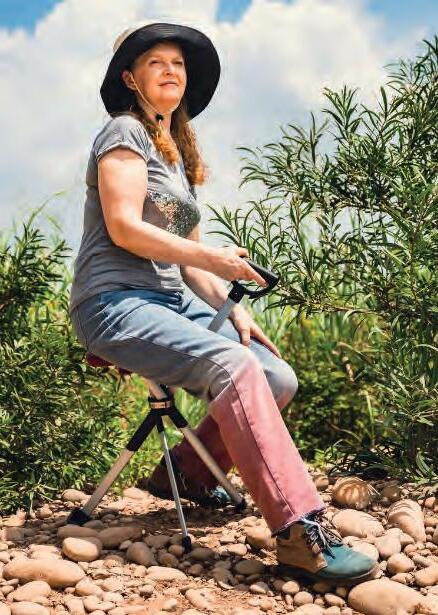

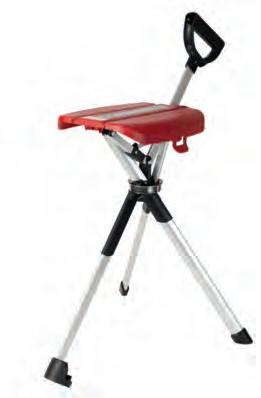
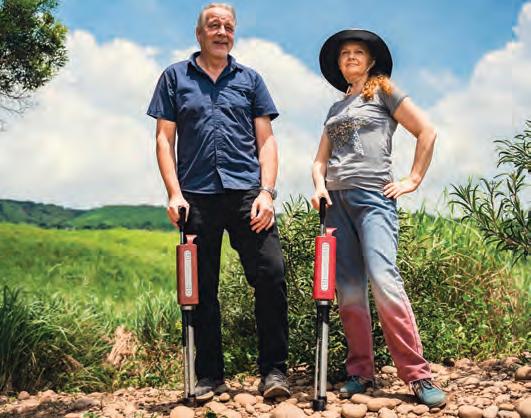
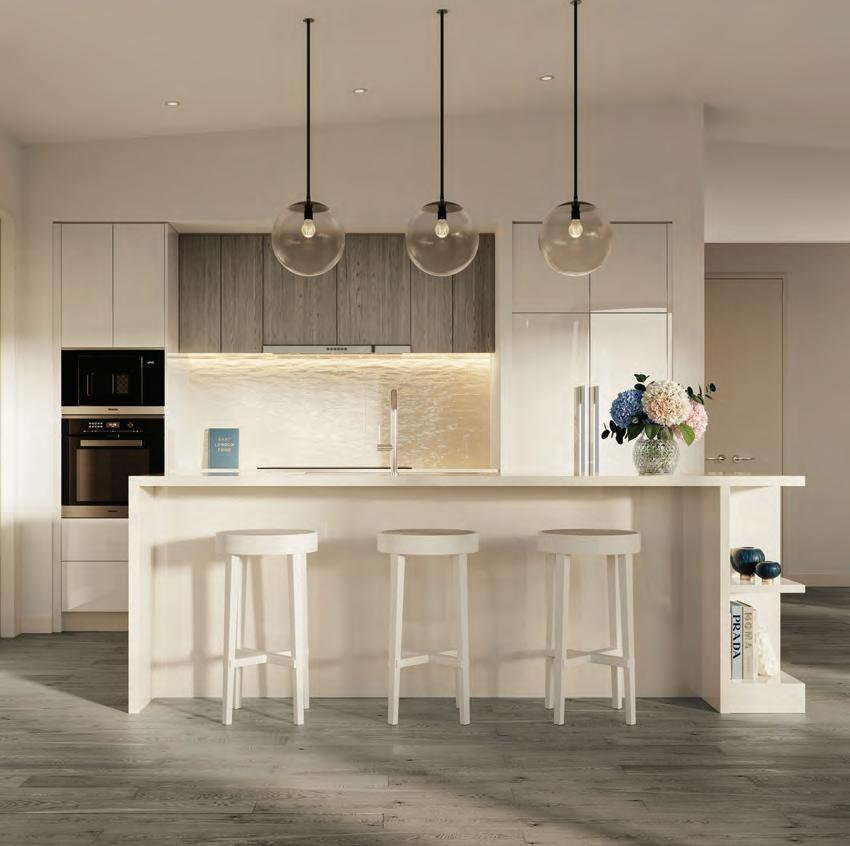
CAITLYN HUTH helps us ease into aerobic exercise, minus any unnecessary huffing and puffing.
Aerobic or cardiovascular exercise is highly regarded for its wideranging benefits to overall health and wellness. It is especially helpful in improving cardiovascular health, mental clarity, joint mobility, energy levels and respiratory function.
There are various ways to engage in aerobic exercise, and this guide will assist you in customising an approach to align with your specific goals.
First up, choose an activity that you enjoy and can easily access. Options include walking, running, cycling, swimming, rowing and hiking – essentially, any movement that increases your heart rate and breathing rhythm. Your selection should be based on personal enjoyment, physical ability and accessibility.
Next, think about structuring your aerobic training in terms of intensity and duration. Generally, workouts with higher intensity require shorter durations before needing rest, while low-intensity exercises can be performed for

longer periods. Here are three key training intensities to consider:
• high intensity: this method includes shorter, challenging exercise intervals that are hard to sustain over long durations. It is especially beneficial for those aiming for higher-performance goals, as it helps safely push your upper threshold capabilities. Engage in short bursts lasting from 30 seconds to two minutes, followed by appropriate rest periods. Activities might encompass stair climbing, jogging, uphill walking, faster swimming, cycling against resistance or lively dancing.

• medium intensity: this level is manageable for several minutes and requires attention to regulating your breathing pattern. Suitable activities include hiking, walking on an incline or dancing.
• long, steady state: this approach consists of easy, sustainable activities that can be maintained for extended periods. The effort feels light, breathing remains effortless, and the heart rate rises only slightly.
The aim is to build efficiency with your performance. To do that, focus on keeping a breathing rhythm while exercising, and then doing deep and slow breaths during recovery to help the body return to its baseline.
Your ability to recover well and be ready to go again is a greater indicator of your aerobic fitness, rather than just pushing hard in one effort.
Caitlyn Huth is an exercise physiologist at Full Circle Wellness. Call 5456 1599 or visit fullcirclewellness.com.au
HAVE you ever been to a come-and-try day?
In our local area (and, I am told, in many other places Australia wide), clubs and sporting organisations run come-and-try days.
These are generally free, or a small fee or donation applies.
Locally, we have all sorts of sporting and exercise groups that provide free trials. Naturally, the group does it to promote their club and to assist with recruiting.
The come-and-try day is a fantastic way to have a go at something you may have been wanting to try for some time, and you do not have to be out of pocket to do so.
Gyms do a similar thing. In fact, many gyms will offer more than just a day trial: some offer up to a week.
A come-and-try day may be just the thing to get you interested in a particular program. Clubs and organisations these days have so much competition that they often spend a lot of time on recruitment. In line with
promotions, discounts may apply. Clubs and organisations now more than ever are offering discounts to seniors, and that makes sense. With an ageing population that has an increasing life expectancy, the senior or retiree market is growing. Check out regional media or local government (councils within Queensland and Australia often keep databases on clubs and organisations).
Start with a phone call and don’t forget to ask if discounts apply. Our exercise group has tried dragon boating, outrigging, pickle ball, croquet, gate ball and tennis – all for free. In most, if not all, of these activities we have received detailed instructions and some have provided initial coaching.
Come-and-try days are a win/win situation: the organisation may benefit from your continued custom, and you get the chance to try something for free or very low cost.
Tom Law is the author of health and exercise-related books. Visit facebook.com/Tom’sLaw or call 0409 274 502.










KAILAS ROBERTS reports on the latest research on one of the newly determined risk factors for dementia.
Over the past few years, The Lancet, a prestigious medical journal, has commissioned reports from experts about modifiable risk factors for dementia and cognitive decline. The most recent report came out in July this year. In total, 14 different factors have been identified –ones that may have an impact from childhood all the way through to later life.
Each time a report is written, more factors are determined and the percentage of cases of dementia that could potentially be prevented or delayed appears to increase. The 2024 report suggested that perhaps up to 45 per cent of cases would fall into this category.
One of the newly determined risk factors is high midlife LDL cholesterol. It was suggested that up to seven per cent of cases of dementia worldwide could be delayed or avoided if LDL cholesterol is optimised at a patient and societal level.
Cholesterol, in fact, serves very necessary and helpful functions in the human body and brain. First of all, it is an integral part of the structure of the brain and, in particular, the cell membranes. It is also part of myelin: an insulating coating around nerve fibres that helps
them efficiently transmit messages. It influences the changeability (plasticity) of synapses, which are the gaps between nerve cells – again, a critical part of messages being transmitted throughout the brain. Cholesterol is a precursor to several hormones which play important roles in brain health.
Blood tests for cholesterol can differentiate between LDL-cholesterol (the so-called ‘bad cholesterol’) and HDL cholesterol (or ‘good cholesterol’). Ideally, you want to have low levels of LDL cholesterol and high levels of HDL cholesterol, and the reverse scenario is certainly not desirable. LDL cholesterol contributes to dementia risk in a number of ways, including by causing atherosclerotic disease (diseases of the blood vessels caused by build-up of cholesterol containing plaques on vessel walls) which impacts blood flow to the brain, and by inducing insulin resistance and chronic inflammation.
Some people have a genetic propensity to high LDL cholesterol, but it is also something amenable to lifestyle interventions and medication treatment. Chief among the former includes reducing
The patient becomes the carer (and the carer the patient) as CHARLIE GRIFFITHS and his wife try to battle through a night to remember.
Ilearned a valuable lesson last week. I had an atrial fibrillation episode on Wednesday evening and when my blood pressure (BP) climbed to 220/120 and my pulse rate was 120, I bowed to my wife Barb’s demands and allowed her to call for an ambulance.
The usual deal: great ambos put me at ease and compassionately transported me to the nearest Emergency Department (ED), 30 minutes away, where I was triaged and allocated a bed.
An urgent blood test showed I wasn’t having a heart attack. So, it was just a matter of waiting until the symptoms settled enough to sign me out. Within an hour, my BP was under 200, pulse mid-90s. An early despatch looked imminent. Then, it got interesting. Barb drove into town to support me and drive me home. However, at the ED entrance, she rolled her ankle on a concrete step and would have crashed heavily had it not been for a quick-thinking ambo who caught her just centimetres from the tarmac.
She managed to stagger to Bed 3 and collapsed into my bedside chair. She was in obvious distress. So, the nursing staff triaged her and arranged for a doctor to attend ASAP.
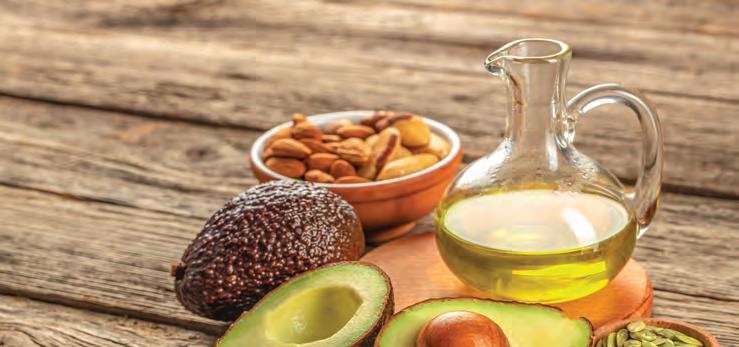
your intake of saturated fat, found in red meat, full fat dairy products and processed foods. Limiting these foods and replacing them with sources of healthy fats (for example, olive oil, nuts and avocados) is advised.
Interestingly, the link between dietary cholesterol intake and LDL cholesterol levels is far less robust. Increasing fibre in your diet can also help, and there is some evidence that plant sterols (found, for instance, in certain margarines) may be beneficial. Exercising regularly may help lower LDL cholesterol levels as well with weight management. Alcohol and smoking can both elevate LDL cholesterol levels, and these should be addressed. There is some controversy about medications for lowering cholesterol. The most popular drugs are the statins, and these medications perennially appear on the best-seller lists of drugs. Statins generally work by reducing cholesterol
production in the liver. There is ample evidence that, in general, their use is associated with a reduced risk of dementia, though some users do report cognitive problems while on them (brain fog and poor memory) and there may be a subset of people who do not do well long term. This is perhaps in part because of a pathological reduction in brain cholesterol which we have seen to be a critical part of brain structure and function.
It does make me think, however, that the lifestyle interventions should be the primary treatment and statins only used when these are not working. Lowering LDL cholesterol is low-hanging fruit when it comes to reducing dementia risk and is worth discussing with your doctor.
Kailas Roberts is a psychogeriatrician and author of Mind Your Brain: The Essential Australian Guide to Dementia, available at bookstores and online. Visit yourbraininmind.com or uqp.com.au
Meanwhile, my BP troughed in the mid-160s and my pulse was back to the low-90s.
The keyboards were clacking – I was ready for discharge, even though my heartbeat was still irregular and I felt quite unwell.
They disconnected me from the monitoring devices, and Barb and I switched places. She was much more comfortable with her leg elevated and I was grateful to be seated.
After much prodding and jumping about, to say nothing of a couple of involuntary profanities, the decision was made to place Barb’s lower leg in a plaster cast. The trainee doctor and solitary nurse struggled to navigate Barb’s longer-thanaverage legs. So, I was commandeered to assist with the cast installation. All went well and the damaged joint was stabilised.
A strip of impressive painkillers for Barb, and we were both discharged. The nurse arranged a wheelchair for Barb while I wandered into the darkness to locate and retrieve her little car.
I reversed into the ambulance zone where the nurse and I funnelled the trussed Barb into the passenger seat.
Once home, I took on the darkness

again and located a pair of crutches in the garden shed.
Barb was a little rusty with these after a hip replacement 18 months earlier, but we managed to navigate the potholes in the front yard and ascend the steps into the house. Considerable fumbling ensued as Barb was disentangled from her apparel, toileted and placed in bed at 2am.
Next morning at 8am, Barb was summoned to appear at Radiology before revisiting ED for a professionally conducted moon-boot fitting.
It was only when the chaos abated that I had a chance to reflect on my own situation.
I was grumpy. My head was throbbing, my heart was still out of rhythm, I wasn’t game to check my BP and I hadn’t eaten since the previous evening.
It was only after a tense verbal fracas with Barb that I realised the reason for my grumpiness: I felt displaced and neglected
when her swollen ankle attracted more attention than my boring heart monitor.
I felt ashamed that I might feel resentment toward the amazing lady who had done so much for me during my long-term illnesses, treatments and recuperation.
When I stopped feeling sorry for myself, my headache and anxiety chest pain subsided, and a sense of calm settled on the household.
Gotta go now. Barb’s trying to do the dishes while balancing on crutches. What could possibly go wrong?
If this article resonates with you, comment at charliegriffithscoaching. com/contact
Charlie Griffiths is a certified life coach and Neuro Linguistic Programming practitioner dedicated to helping fellow professionals thrive with a chronic disease or serious injury.


















By Mocco Wollert
SAY the word ‘jewellery’ and we immediately think of women and how their faces light up.
Well, most women’s faces light up.
Some might pretend that it means nothing to them, but I don’t quite believe that.
From a very early age, little girls hang beads around their necks and have bracelets jingling on their tiny wrists – the more the better.
Put the words ‘pink’ and ‘bangles’ together and a little girl emerges.
There are many occasions in a woman’s life marked with jewellery –friendship rings, engagement rings, wedding bands. There are anniversary rings: from the ardent ‘I have known you six months today’ to the ‘is it really already our wedding anniversary again – how many years is it?’.
Generally, men seem to be out of the picture. Very few men wear any jewellery these days, apart from a wedding ring, which is usually pretty plain and not an elaborate work of art to match the engagement ring of the
bride. It was not always so. You only have to look at an old painting from previous centuries to find men hung with baubles like peacocks, earrings dangling from their earlobes. They did not wear wristwatches (which hadn’t been invented yet).
In our modern world, wristwatches were to a man what pink baubles are to a little girl.
However, as the gender definition is changing in our modern world, men are starting to wear the odd earring or a gold chain around their necks again.
Tattoos seem to be the modern young man’s adornment – and they cost as much as a gold chain. Not wearing ‘adornments’ has made it harder to find Christmas or birthday presents for the male of the species.
In my generation (how many times have I written this!), presents were set in a mould of some sort.
There was a list, which never varied. It contained handkerchiefs, socks, cufflinks, ties and tie pins, perhaps a book, pen and, of course, cigars (perish the thought now!). What do we replace these with?
Every man – and, for that matter, every girl – now buys a modern Apple watch or some such electronic device for themselves.
Long gone is the time when an

elegant wristwatch was something a man desired.
European women of the upper class wore a lot of jewellery.
It showed that their husbands were wealthy men. I wonder whether that is still the case.
During war time, wealth was preserved by sewing jewels into hems of skirts. Today’s modern young woman probably would not know how to put a stitch into fabric.
I have a friend who wears up to three rings on every finger, big gold earrings and several bracelets – all solid gold – no matter where she is going. She told me she was afraid to leave her jewellery at home.
Long gone are the times when a rich lady handed her jewels to her maid to put them away at the end of the day.
May your jewels be safe and give you joy.
Email mocco.wollert@bigpond.com

By Cheryl Lockwood
“I CAME for the weather and stayed for the welfare.”
I overheard this said at an Australian Citizenship ceremony and smiled at the joke. In reality, I felt absolutely honoured to attend the event.
My daughter-in-law was being sworn in as an Australian citizen on this particular morning, along with 385 others from 47 different countries.
I had no idea of the number of people who choose this country as home every year. There was another ceremony scheduled for the afternoon –and this was in just one little part of the country.
Born-and-bred Aussies know that it’s a pretty good place to live. Some might say the best.
This year is the 75th anniversary of Australian citizenship. In 1949, just seven people were sworn in as citizens at the first ceremony in Canberra.
Since then, more than six million people have taken the pledge.
On this day, Sunshine Coast Mayor Rosanna Natoli attended. She looked flawless – just as she did on our television screens as a journalist – but I was surprised how petite she is in real life. Dances by the First Nations Peoples were impressive and the singing in language was moving. Those receiving their citizenship certificates were required to stand and make the pledge together:
“From this time forward, under God,










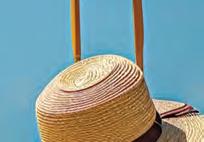







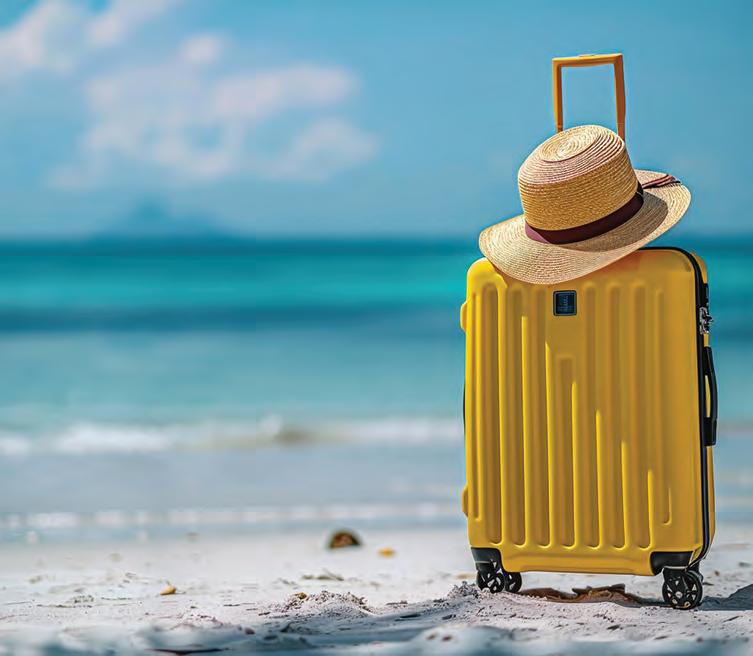
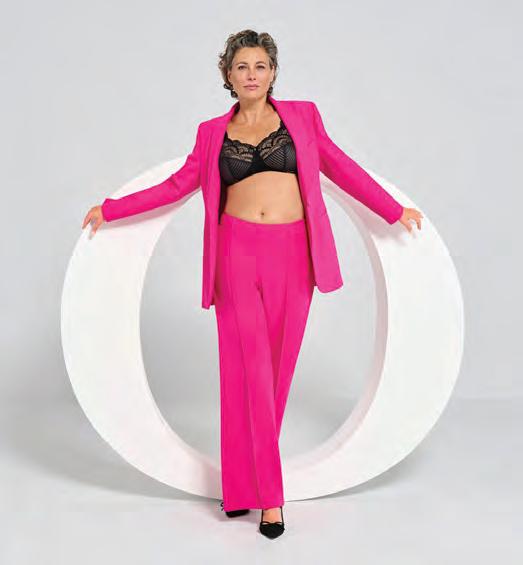
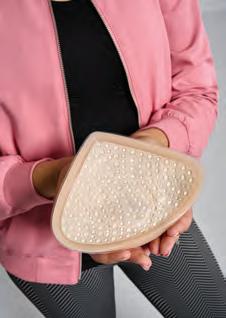




I pledge my loyalty to Australia and its people, whose democratic beliefs I share, whose rights and liberties I respect, and whose laws I will uphold and obey”.
There are two versions to choose from (one mentions God, the other does not).
Our newest citizens may choose which version they prefer, but once they have recited the words out loud, their Australian citizenship is complete.
It may sound simple, but for some it has been a long road to get to this point, involving visas, financial costs and the passing of a citizenship test.
I can’t imagine what some asylum seekers have faced to live safely in this country. Learning English must be a huge hurdle for some. Plenty of native English speakers struggle with our spelling and grammar, so it must be difficult for those learning it as a second language.
No Australian event would be
complete without our national anthem –both verses. Yes, the national anthem does have a second verse and, apparently, the first verse does not start with, “Australians all let us ring Joyce, for we are onion-free”.
Some years ago, I volunteered to teach English in Thailand. One night, meeting up with volunteers from other countries, we all decided to share our national anthems. The best effort came from a four-year-old Thai child, who sang beautifully. The Canadians, English and Americans put in reasonable attempts.
The Aussie contingent mumbled through the second verse with some embarrassing gaps. Returning home, I made it my business to learn the whole thing, in case I ever found myself having to sing it in a foreign country again.
Don’t ask me to sing my high school hymn. I can’t recall a word of it, but it’s a long time since I had to sing it. Of course, it was difficult to concentrate when we were sweating our way through assembly on plastic chairs which creaked when we moved – the result being farty sounds, which caused the immature among us to laugh uncontrollably.
I saw the paperwork (and computer work) my son and his wife had to complete to prove that she was deserving of citizenship here. The ceremony was both enlightening and enjoyable and I’m glad she made the grade.
Visit lockwoodfreelance.com
BRENDALE VIEW Club thanks all the members who went along to the October dinner meeting.
Members all dressed up wearing their tiaras and peals to celebrate King Charles and Queen Camilla’s Royal Visit to Australia. Official royal watcher Judy went along equipped with her Royal Quiz to keep everyone on their toes on a very entertaining night.
The night also included guest speaker Bronwyn Sheehan, from the Pyjama Foundation. This foundation is another link in the chain to help support disadvantaged children.
The Brendale Evening VIEW Club
LA BOITE Theatre is limbering up to present an Australian-first season of Dipika Guha’s Yoga Play: a tale of downward dog and downward profits, in collaboration with the National Theatre of Parramatta.
A stellar cast – including Brisbane stars Andrea Moor and Thomas Larkin – bring the razor-sharp comedy to life at the Roundhouse Theatre, alongside Sydney darlings Jemwel Danao, Nat Jobe and Camila Ponte-Alvarez.
Moor plays Joan: a savvy businesswoman hired to revitalise a cult-ish yoga apparel company in the
sponsors eight students through The Smith Family Learning for Life program.
If you are unable to make the dinner meeting, the Coffee and Chat is on the first Saturday of the month from 10am. The Coffee and Chat is at White’s Coffee Co., Bracken Ridge Tavern, 153 Barrett Street, Bracken Ridge.
Upcoming event:
November 19 is the club’s Christmas Dinner meeting and the last for 2024, with entertainment by the Ferny Groovers. Dinner meetings are held at 7pm on the third Tuesday of the month at Aspley Hornets Football Club, 50 Graham Road, Carseldine. A booking is required. Call Shayne on 0409 991 428.
wake of a scandal involving its former CEO. Yet, underneath the seemingly serene surface lies a cesspool of misconduct, plummeting sales, cultural appropriation, fat-shaming and rampant consumerism.
La Boite artistic director Courtney Stewart says Yoga Play is a laugh-outloud examination of the business of peace, corporate responsibility and our love of yoga pants at any cost.
WHERE: La Boite Theatre, 6-8 Musk Avenue, Kelvin Grove.
WHEN: November 7-23, various times. TICKETS: from $29-$65. Call 3007 8600 or visit laboite.com.au


BRUCE McMAHON checks out a new breed of hybrid powering up from Asia for the Australian scene.
The electric motoring business is sparking up with any number of new machines headed for Australian showrooms.
The busiest of electric car makers remains the Chinese, with Zeekr and Chery, amid those with fresh offerings in the light car class.
The Korean-built Hyundai Inster runaround, due early next year, is another promising battery/electric car for urbanites.
Among interesting hybrids – with petrol and electric power – on the way is more Chinese product in BYD’s Shark ute, reportedly at a competitive price to upset traditional one-tonne dual cabs when it arrives, perhaps before 2024 is done.
Now on the scene from Europe, in terms of badge name anyway, is the all-electric Smart#1 and Smart#3 with a Smart#5 to come.
All are so-called SUVs with #1 and the bigger #5 more the hatch-wagon style, and the other #3 a hatch-coupe.
All are products of collaboration between Mercedes-Benz design and China’s Geely battery/electric vehicle
platform. “Three keywords are building blocks for the new car: love, pure and unexpected,” says Smart’s head honchos. So there – well on trend for the 21st century.
The last Smarts seen here about 10 years back were small, combustionpowered, mini cars and roadsters.
Different, for sure, but more suited to Euro tastes and petite folk back then.
This time, with increasing urban emphasis on economical and emissionfree motoring (plus parking spaces at a premium), the bigger and bolder electric Smarts from $54,900 may find more favour.
There are three versions of the Smart #1 with Pro+, Premium and Brabus models at up to 4.3m long, 1.8m wide and 1.6m high.
The first two have 200kw of power supplied by a single electric motor to the rear wheels and up to 440km range for the Premium; the $67,900 Brabus version has 315kW and two electric motors for all-wheel drive.
Smart #3 has similar power and drive arrangements but sits on a slightly longer wheelbase with a slightly wider,


more aerodynamic body. So, its driving range is between 435km and 455km and retail prices are up a tad, too: from $57,900 for the Pro+ to $70,900 for the Brabus version.
The 4.7m long Smart #5, which isn’t here yet, is a mid-sized SUV wagon with a promised 740km battery range and a host of add-ons for the adventurers.
This time, the smaller Smarts are brighter, more handsome and more useful than before.
Plus, there is a deal of promise in the marriage of MB design and Chinese engineering.
This time, the Smart cars will fit four average-sized Australians with a two-metre tall driver allowed decent operating space.
Headroom’s best in the #1, but still fine in the #3. And cabin interiors have a premium feel through top-class design, fit and finish – as should be the case when, as before, the Smarts are sold under the Mercedes-Benz halo and through Mercedes showrooms in Brisbane, Sydney and Melbourne.
Both #1 and #3 are good-looking machines (though, perhaps the coupelike lines of the Smart #3 are just that tad more sophisticated) and are armed with today’s usual array of safety, info and entertainment gear.
In a busy, busy motoring world, these Smarts stand out in this particular niche of battery-electric vehicles with a good deal of style and, on the face of it, a decent amount of substance.
Sometimes,theconsequencesofgastricrefluxaremoreseriousthanheartburnor regurgitation,andcouldbecausing,orcontributingtomoresignificanthealthconditions.

Gastricrefluxcontaminationmayoccurthroughouttheheadandneckandcanbethecauseofearandsinusinfections, sorethroat,andadifficultyinswallowing.Refluxcanalsoirritatetheairwaysandbeaspiratedintothelungscausing chroniccough,constantthroatclearing,breathingdifficulties,recurringchestinfections,bronchitis,orpneumonia.
Availableattwoconvenientlocations,ourpatented&exclusiveGastroesophagealRefluxTestaccurately detectsthepresenceanddeterminestheextentandseverityofgastroesophagealrefluxdisease.
Thefirstofitskind,thisnon-invasivenuclearmedicineimagingtechniqueaccuratelyidentifiesgastric fluidcontaminationthroughoutthemaxillarysinuses,throat,middleears,laryngopharynx,airwaysand lungs.


Ifyouthinkyou'dbenefitfromaGastroesophagealRefluxTest,talktoyourdoctoraboutareferralto CitiScanRadiologyorLimeRadiology.Visitourwebsiteslistedbelowformoreinformation Availableat

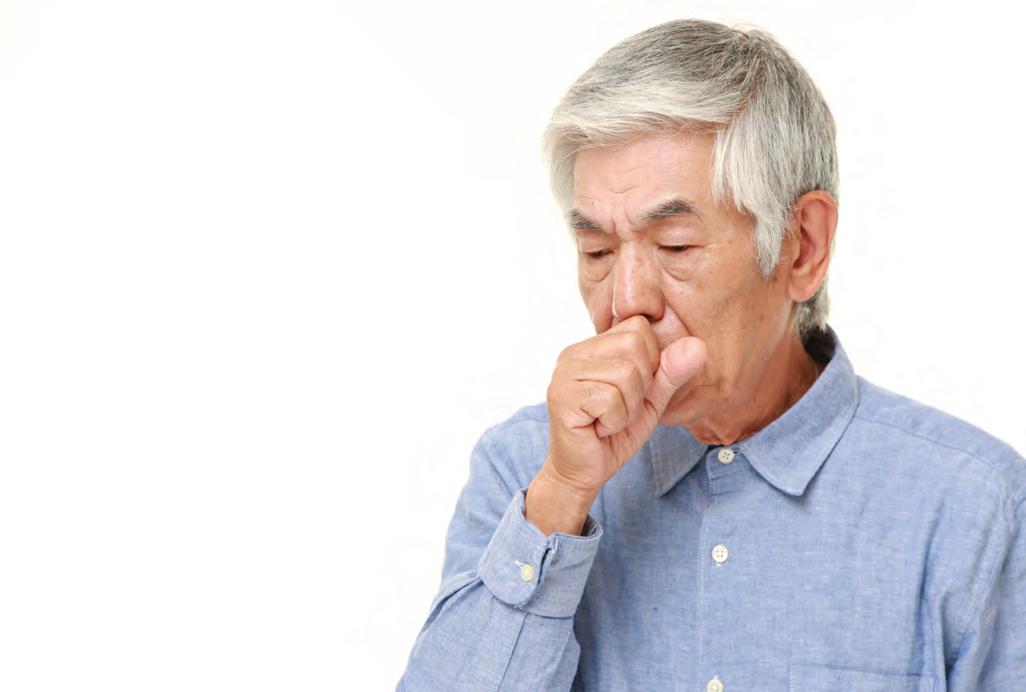


By: Susan Collings, Senior Research Fellow, Transforming Early Education and Child Health Research Centre, Western Sydney University; Elisabeth
Duursma,
Research Theme Fellow Education and Work, Western Sydney University; Gabrielle Weidemann, Associate Professor in Psychological Science,
Western Sydney University; Michelle O’Shea;
Senior Lecturer, School of Business, Western Sydney University.
More than 40 per cent of disability carers have disability themselves – and they need more support.
Caring for someone with disability is a complex and demanding task.
The latest Australian Bureau of Statistics figures show this role is increasingly being undertaken by people who have disability themselves. There were 1.2 million primary carers in Australia in 2022, and of these, 43.8% have disability (up from 32.1% in 2018).
Disability support and aged care are critical issues for the federal government right now.
The new Aged Care Act will take effect in July next year and amendments to the National Disability Insurance Scheme (NDIS) Act rolled out from early October.
A National Carers Strategy, recognising the demands placed on informal carers and the need for better supports, is also being developed.
What do this group of carers need? And are they getting the right kind of support?
INVISIBLE LABOUR – Three million
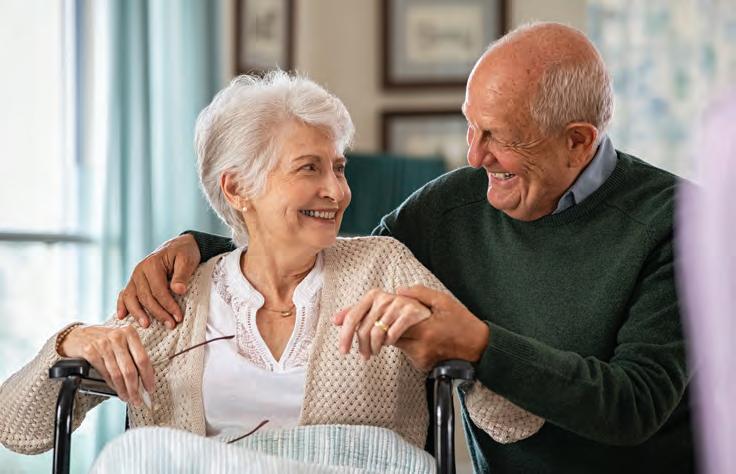
Australians currently provide informal care for loved ones with disability, medical conditions, mental illness or frailty from ageing.
In line with our ageing population, one-in-six carers are over 65 and most older Australians want to age ‘in place’ at home. This means informal care
needs are set to rise exponentially. Improved diagnosis, more disclosure of disability status and higher prevalence of health conditions leading to disability are increasing the numbers of and demands on informal carers.
WHO IS DOING THE CARING AND WHY? – While both women (12.8% of
the population) and men (11.1%) provide informal care, women are more likely to be primary carers (6.1% are women, 3% are men.
Primary carers are less likely to be in paid employment than non-carers (64.6% to 82%), and fewer than half of those caring for 40 hours or more a week are employed.
Informal carers are more likely to have a disability or chronic health condition (38.6%) than the general population (21.4%), with even higher rates among primary carers (43.8%).
The main reasons for becoming a carer are a sense of family responsibility and emotional obligation. Over a third of those caring for their child say they have no other choice.
We analysed qualitative data from the 2022 National Carer Survey conducted by Carers NSW.
Of 6825 respondents from across Australia, over 80% were women and almost half (47.6%) identified as having disability or long-term health conditions, which the survey combines. Disability and poor health among carers are associated with higher levels




















of emotional distress and greater difficulty in accessing services.
‘MY PROSPECT OF EARNING AN INCOME AND SAVING IS BLEAK’ – Statistics tell us only part of the story. The voices of informal carers who report living with disability or chronic health conditions shed light on the layered demands they face. They reported that care is often invisible, undervalued and ceaseless. One woman, aged 73, described informal care as “hard and unappreciated work”.
A lack of government support and financial uncertainty left many despairing. As one carer, aged 56, said: “No government recognises us and in the end, we are saving them billions/ trillions of dollars […] I have been a carer for over 13 years and it will go on for many years, so my prospect of earning an income and saving is bleak.”
Caring can have profound health and wellbeing effects. As another woman, aged 56, said: “Being close to retirement myself, and having elderly parents, puts so much strain on my own health, mentally and physically. I have had to deal with breast cancer and its treatments and ongoing side effects. This is really stressful. I oversee all the services, and manage ongoing issues. My care role is endless. I only work minimal hours myself due to my care role. Who looks after me?”
– Carers with disability or chronic health conditions report a lack of appropriate, accessible and timely services. This makes it hard to meet their own health-care needs. Many struggle with arranging support across mainstream and NDIS providers on behalf of the person they care for and themselves.
Our research about the needs of a specific group of disabled Australians with care-giving responsibilities –parents with intellectual disability – find they can fall between system gaps when mainstream services are not accessible or the NDIS fails to take a family-centred approach.
A parent with intellectual disability may struggle to understand complex and shifting eligibility rules and might be able to use their NDIS funding to assist with meal preparation for themselves but not for their child. As one mother with intellectual disability said: “No one explained to me, ‘Oh, the NDIS package can help you with a lot of different things’, like helping with my parenting capacity.”
– A cornerstone of the NDIS reforms is the creation of foundational supports. That’s good news for the 86% of disabled Australians without an NDIS plan and their informal carers, who rely on mainstream services like schools, health
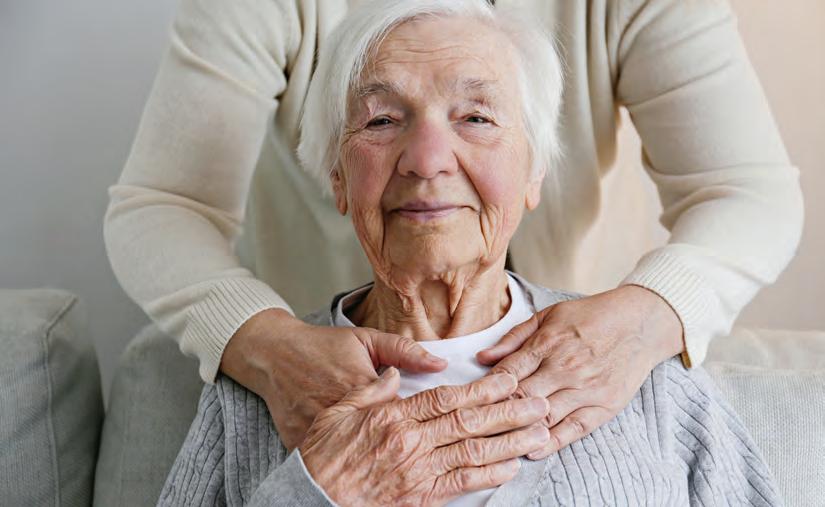
services and public transport.
Likewise, the National Carers Strategy is an opportunity to ease some of the burden shouldered by many informal carers.
By consulting with carers directly, services designed to meet their diverse needs and circumstances can be made available. In the immediate term, often carers reach crisis point before receiving support.
Early interventions in the form of practical, everyday, orientated supports – including respite together with peer support – can help.
Proper support for carer wellbeing and economic and social participation,
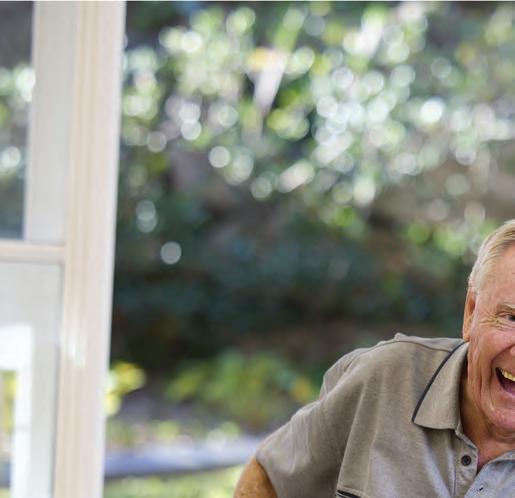
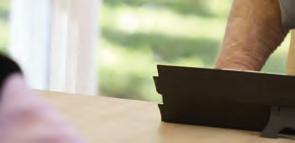

from all levels of government, recognises the complex role carers play and their own support and health-care needs. These are only going to increase in the future.
The authors wish to acknowledge the contribution of Sarah Judd-Lam and Lukas Hofstaetter from Carers NSW for their data and analysis contributions to this piece.
This article originally appeared in The Conversation. To read the full article, go to: theconversation.com/who-looks-afterme-more-than-40-of-disability-carershave-disability-themselves-and-theyneed-more-support-236786
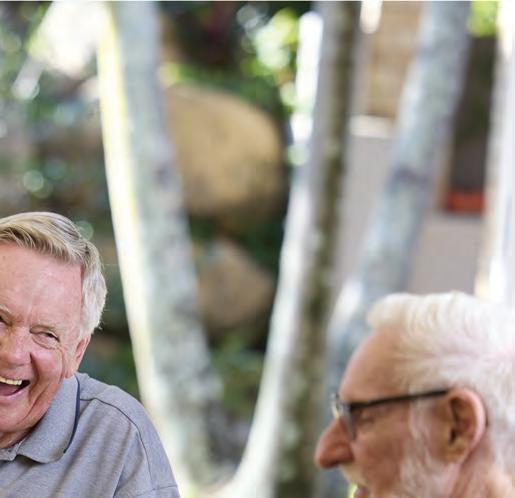












As we reflect on October, Queensland Seniors Month, we are pleased that we were able to attend more than 25 Seniors expos and information events across the state. We also congratulate the many organisations and communities for continuing to host these dedicated information events for seniors.
As an aged care advocacy organisation, we know how important it is to be well informed and have the right information when it comes to aged care.
Understanding how the aged care system works, the services you are entitled to and your rights in aged care, is the key to accessing and receiving quality aged care supports which respect your choices, respond to your needs and look after your safety and wellbeing.
That’s were advocacy can help. Aged care advocates are here to give older people a voice and practical support when it comes to navigating aged care.
At ADA Australia, our aged care advocacy and community legal services are dedicated to
supporting older Queenslanders to accessing and getting the most from quality aged care services and supports – whether at home, or in an aged care facility, and to maintaining your rights to make decisions and have agency over your life.
Whether it’s not knowing where to start, not getting the right support, not receiving the quality of care you would expect, difficulties dealing with your service provider or decision makers, or more worryingly, being subject to abuse and neglect –having an advocate by your side can give you the guidance, confidence and support to speak up.
Importantly, advocacy is free, and an advocate works for you. They are on your side and are directed by you. They won’t do or say anything without your permission, and their focus is solely on a positive outcome for you.
No issue is too big or too small when it comes to your life or the lives of your older loved ones. Chat with an advocate at ADA Australia today on 1800 700 600.


Meet our Community team
We know that the aged care system is complex, and many people have questions. At ADA Australia we have a dedicated team whose job it is to keep older people in the community informed about their rights in aged care and where to get support. Our Community Development Officers are available to come to your community or social group to host an informal information session and answer your questions about aged care and advocacy. Contact info@adaaustralia.com.au to book a session.

ADA Australia advocacy and community legal services
At ADA Australia we can assist with:
• Accessing or getting the most from your aged care services
• Understanding aged care provider services or fees
• Having a say in your care and the things that impact you
• Recognising your rights and expressing your wishes when your ability to make decisions is questioned or you are unhappy with the decisions being made on your behalf.
To find out more visit www.adaaustralia.com.au
ADA Australia’s free Queensland Seniors Calendar 2025 is available now.
The calendar is a reference guide to support and services available to older Queenslanders, and information to help you understand your rights.
This year’s edition “Things our Mums used to say” acknowledges the valuable life lessons that older women have taught us.
Contact ADA Australia to find out where to pick up your copy or supply by emailing info@adaaustralia.com.au
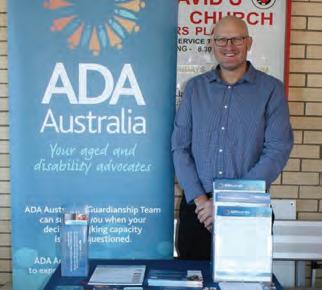
Scott has worked in the aged care and disability sector for many years. “I can see first-hand how people often need someone by their side to advocate for their rights and needs. Aged care support systems can be difficult to navigate and having someone who understands how the system works to guide you can be the key to you getting the support you need and making sure your rights are being upheld.”
Based in Brisbane, in his spare time you’ll find Scott happily exploring Brisbane’s network of mountain bike trails or with his family and two cats Charlie and Que.

Matilda has worked in the community development space for many years, working in a variety of contexts, including local government, community organisations and social enterprise.
“There are many people in our communities who face barriers to accessing aged care services and having their voices heard. Having someone who can support them in a way that is tailored to them, is so vital in shaping an aged care system that supports our diverse communities all around Queensland.”
Based in Brisbane, Matilda can often be found ducking into a local Op Shop to find a gem or heading out for a trip to the playground with the family, bonus points if it’s near a coffee shop.
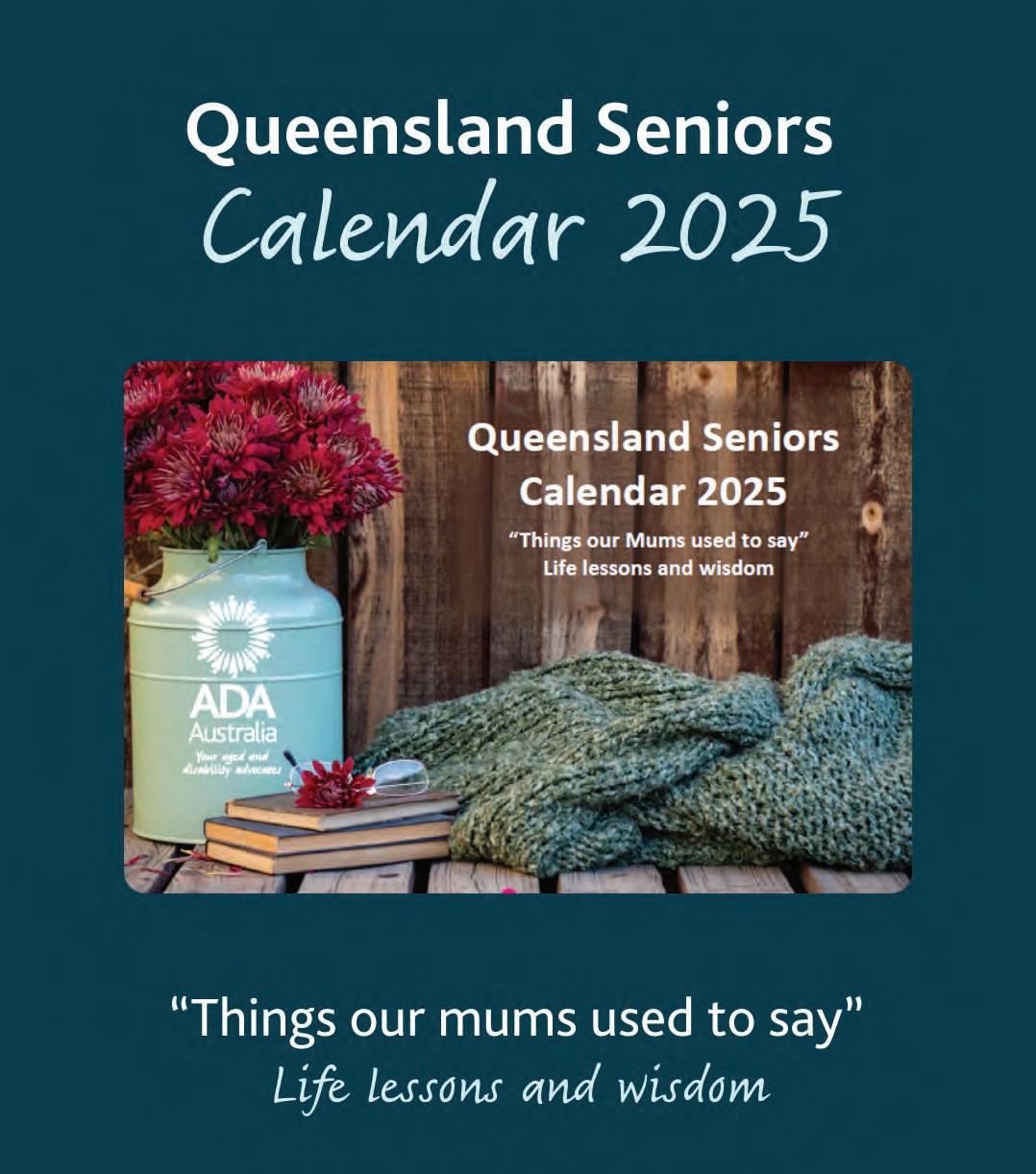
By DON MACPHERSON
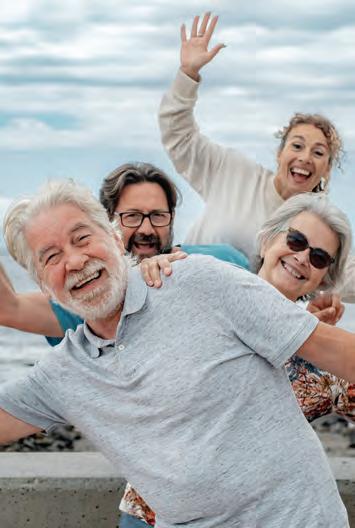
The choice to move to a retirement village is primarily a choice for community rather than merely a financial investment.
If you are focused solely on the financial outcome, you are asking yourself the wrong question.
People do, and should, buy for lifestyle as a major consideration. It’s a choice for companionship, community involvement and security.
However, as with any significant transaction, remember the adage: “Let the buyer beware”.
People buying into a retirement village need to understand that the transaction is very different to buying and selling a house in the way they have been used to throughout their lives.
It involves ingoing, ongoing and outgoing costs and benefits that need to be understood.
Retirement villages provide different ways of creating rights to reside in their properties. In essence, you buy a right to reside for an indefinite period.
1. Leasehold. This is the most common way that retirement villages offer their properties to incoming residents. The lease contract creates a right to reside for an extended period (usually 99 years – though, we are yet to see someone outlive their lease). A lease is registered in the Titles Office. There is no stamp duty. Sometimes there is capital gain, but not usually. General
services fees apply. Normally there are exit fees.
2. Licence. Less common than leasehold (at least in Queensland), a licence creates a right to reside but is not registered against the title deed. However, there are additional protections provided under The Retirement Villages Act. Usually there is no capital gain. There is no stamp duty. General services fees apply. Normally there are exit fees.
3. Manufactured/relocatable homes/ over-50s resorts. This model involves owning the house, but not the land. Because you own the home, there is usually a modest capital gain possible. There is no stamp duty. The owner pays a site rental to have a house on the land owned by the operator. There are no exit fees.
4. Freehold. This is the way that people are used to owning property. They buy the property (like buying a house) and can sell it at the end. They pay stamp duty. They get any capital gain (and bear any loss). The title is registered in the Titles Office. It is more like buying a unit in an apartment building and is subject to a body corporate structure. Body corporate fees, rates and water
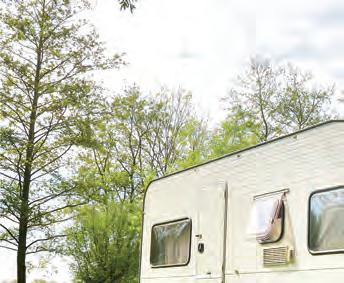

charges apply. Freehold is rare in the retirement village space.
Whatever the ownership model, all retirement living contracts provide extensive rules in relation to occupation of the home in which you live.
There are always ongoing fees while in the village. There are usually significant fees payable at the end of the ownership period – called various names including exit fees, or deferred management fees. Exit fee percentages vary across the industry and can be based on the incoming payment, or the resale figure.
Other exit payments, such as renovation costs, reinstatement costs, costs of sale, legal costs and valuation fees vary from contract to contract, and operator to operator. Some allow for capital gain (and loss). Some do not.
Retirement living contracts are always long and complex (often running to 100-plus pages). Specialist advice (legal and financial) should be sought before entering into a contract for any type of retirement living arrangement.
Brisbane Elder Law are experts in all forms of retirement village contracts. Call 1800 961 622 or visit brisbaneelderlaw.com.au


WHILE we have heard in the news about parents helping their children onto the property ladder, it now seems that more grandparents are stepping up to help their grandchildren achieve home ownership.
Recent research reported by McCrindle reveals that younger generations are increasingly turning to their grandparents, rather than their parents, for help in navigating the challenges of today’s housing market.
The research shows 12 per cent of Gen Z have received financial assistance from their grandparents to buy a home.
This marks a shift in how younger Australians are securing property, as the ‘bank of mum and dad’ is no longer the only source of help.
In fact, it’s becoming clear that many grandparents are taking an active role in
MANY Gen X Australians, unlike previous generations, are facing retirement with the challenge of relying predominantly on their own superannuation contributions, rather than a government pension.
But many find themselves underprepared. Rising living costs, longer life expectancies and often insufficient super balances mean that this generation may struggle to maintain its desired lifestyle during retirement.
As Gen X (born 1965-80) approaches retirement, exploring options to boost income streams while preserving capital becomes crucial.
One such option is real estate credit funds. These funds can offer a compelling solution for people looking to generate stable income with lower volatility when compared with listed



helping their grandchildren achieve milestones such as home ownership, by releasing equity in their own property.
In addition, releasing home equity can allow grandparents to support their grandchildren in other ways as well, such as paying for private school fees to set them up for success in the future.
This growing trend reflects not only the deep family bonds between grandparents and their grandchildren, but also the financial pressures facing younger Australians more generally.
“We continue to see more and more grandparents and parents looking to share their wealth with their family now when it makes the most sense, rather than waiting until they leave an inheritance,” Inviva CEO Andre Karney says.
While reverse mortgages today c ome with important government protections including the no negative


investments on the stock market.
Real estate credit funds operate by lending funds, secured against property, in exchange for interest payments.
Investors in these funds benefit from regular income distributions, often at higher rates than those offered by
standard fixed-income products such as bonds or term deposits.
Because these funds are secured against real estate, they may app eal to investors seeking a capital stable investment.
The appeal of real estate credit funds
lies in their ability to offer stability and higher income, making them an attractive option for Gen X retirees looking to bridge the gap between their superannuation and retirement needs. By diversifying into real estate credit funds, retirees can enhance their income while maintaining a focus on capital preservation – ensuring they are better equipped for the longer retirement horizons many now face.
So, while many Gen X Australians feel underprepared for retirement, exploring such opportunities may help boost income and achieve greater financial security in later years.
Visit capitalpropertyfunds.com.au















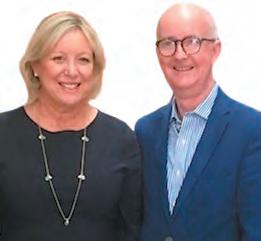

CPAP Direct has become a trusted name in sleep therapy solutions, dedicated to supporting those who experience sleep apnea.
Offering a wide selection of CPAP machines, masks and accessories from leading brands, the company ensures that every customer can find products tailored to their unique needs.
This focus on personalised support sets CPAP Direct apart as more than just a retailer: it’s a committed partner in helping people achieve consistent, restful sleep.
Understanding the importance of CPAP therapy: sleep apnea, characterised by disrupted breathing patterns during sleep, affects quality of life and can lead to severe health issues if left untreated, from heart complications to chronic fatigue. CPAP therapy (Continuous Positive Airway Pressure) remains one of the most effective solutions, providing continuous airflow that keeps airways open throughout the night. CPAP Direct’s knowledgeable team understands the life-changing
impact that well-matched therapy equipment can have, striving to make every experience straightforward and tailored to individual health needs.
Innovative products and ongoing support: CPAP Direct has advanced machines such as the popular ResMed AirSense 11 and Fisher & Paykel SleepStyle series, known for features including auto-adjusting pressure, humidifiers and easy-to-use interfaces.
Accessories such as replacement masks, hoses and chambers are also available to ensure that customers have everything they need to maintain and enhance their therapy over time. Beyond providing high-quality products, CPAP Direct goes the extra mile with support services, including troubleshooting, mask fittings and equipment advice. This level of assistance creates a seamless experience, especially valuable for those new to CPAP therapy who might need extra guidance.
Personalised care and expertise: every customer
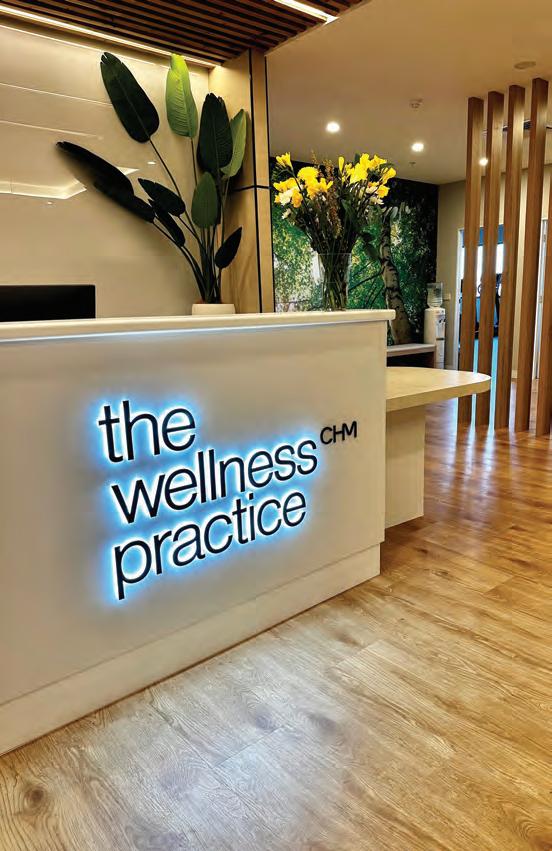
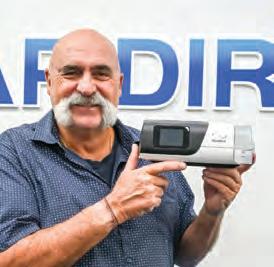
benefits from the expertise of the CPAP Direct team members, who understand the challenges of adjusting to sleep therapy.
Personalised care, offered in-store and over the phone, is at the heart of the service, making it easy for customers to find answers to questions about their equipment, travel options or maintenance routines. This commitment fosters an environment where users feel supported, informed and equipped to tackle sleep apnea with confidence.
Whether you’re considering CPAP therapy for the first time or are an experienced user looking to upgrade, CPAP Direct has everything you need for a better sleep.
Visit cpap.com.au
AS A physical therapist, my goal is to help our patients reduce pain, move better and strengthen weak muscles to prevent further injuries.
In addition to physical therapy, we know the importance of walking aids, which can improve walking patterns, balance and safety. This is ideal, especially for people who want to be independent.
Recently, we came across the Ta-Da Chair: an upgraded cane version that enhances patients’ mobility. Balance plays a vital role in our daily activities such as getting out of bed, walking up stairs, and going out to the parks. During recovery from leg, back or hip injuries, patients often struggle to maintain balance, increasing the risk of falls.
The Ta-Da Chair – with its anti-slip rubber feet, secure walking stick lock and reinforced rim – provides the necessary support for patients to engage in gentle activities safely.
Pain and stiffness may be present during recovery, especially with arthritis or after an injury. A walking aid helps
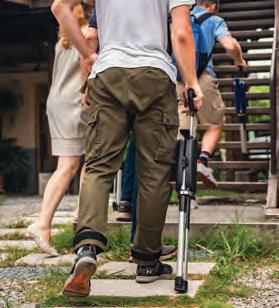
patients transfer some body weight off the knee or hip, reducing joint pressure and pain.
The Ta-Da Chair also allows patients to sit and rest when needed, relieving joint and muscle strain and helping to ease discomfort and stiffness. The added support and ability to take breaks helps prevent overexertion, reducing the risk of falls or further injuries –especially crucial for patients with balance or stability issues. Some patients may avoid walking sticks or tripod seat canes due to stigma or peer pressure. The Ta-Da Chair’s sleek design combines a hiking stick with a tripod seat, providing practicality and style, helping patients feel more comfortable and confident in front of others.
WORDS: Brent Yeung, physiotherapist, Pain Free Physio and Allied Health Visit painfreephysio.com


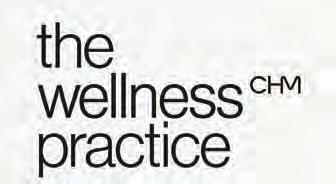
Griffith University’s Ethos Project researchers are seeking participants aged 65 and older to trial an innovative heat-health warning app.
This app is part of a larger project aimed at developing an in-home early warning system to help older adults stay safe during heatwaves, which lead to more deaths in Australia than any other natural disaster.
Last summer, the Ethos team installed its tablet-based system in 89 homes across the Sunshine Coast, Moreton Bay, Ipswich, Brisbane, Logan, the Southern Downs and the Gold Coast, gathering data over three months to better understand how heat affects older adults. Results from the first trials showed that despite 90 per cent of homes having air-conditioning, average temperatures recorded indoors were hotter at 27C than outdoor averages, recorded at 25.4C.
This summer, the Ethos team is trialling a mobile app version of the system which will provide real-time alerts and personalised advice to help users manage

AUSTRALIA has the highest rate of skin cancer in the world, so every Aussie needs to be informed and take action.

indoor heat more effectively. The team is also looking for a small portion of participants to trial the app alongside a Fitbit, which they can keep after the trial ends.
To be eligible, participants must be over 65, have a smartphone (either Android or iPhone), live in Southeast Queensland or Hervey Bay, do not have a cognitive or psychological disorder and be willing to complete a confidential health history questionnaire.
Throughout the trial, the Ethos team will provide ongoing support, and participants will have the opportunity to share their experiences with fellow participants.
Non-Fitbit participants will also receive a $50 gift card as a ‘thank you’ for their involvement.
For more information and to register, email ethos@griffith. edu.au, call 5552 7903 or visit climate-ethos.com




The Cancer Council website states that about two-in-three Australians will be diagnosed with skin cancer during their lifetime. In 2024, about 2000 Australians will die from this disease. Almost twice as many men as women will die from melanoma. But there are ways to limit and prevent damage when the UV level is 3 or higher:
• slip on sun protective clothing that covers as much skin as possible
• slop on SPF50 or SPF50+, broad-spectrum, waterresistant sunscreen – apply 20 minutes before going outdoors and then every two hours
• slap on a hat – broad brim or legionnaire style
• seek shade
• slide on sunglasses.
During National Skin Cancer Action Week (November 17-23), Cancer Council Australia is urging men aged over 40, especially, to be SunSmart and reduce their skin cancer risk.
THE Australian Orthopaedic Association’s National Joint Replacement Registry (AOANJRR) marked its 25th anniversary by recording its two-millionth joint replacement procedure.
The milestone was highlighted in the 25th edition of the AOANJRR Annual Report, released last month.
Since its inception in 1999, the registry has recorded 2,131,050 replacement procedures. In the past 12 months alone, 146,795 hip, knee and shoulder replacements were performed.
“The double-digit increase in knee replacements (19 per cent) and shoulder replacements (14 per cent) in the previous 12 months is largely secondary to unmet demand due to Covid backlogs, and increased adoption of significant advances in surgical procedures and prosthesis design, including the total stemmed reverse shoulder technique,” AOA president Dr Michael Johnson says.
“These now account for 73
per cent of all shoulder replacement surgeries.”
The report also highlights a decline in planned surgeries at public hospitals.
“The annual report indicates a significant decline in elective joint replacement surgery being performed in public hospitals to a level that is lower than required to meet demand,” Dr Johnson says.
“This has been contributed to by the need for public hospitals to deal with acute illness and trauma, combined with a population demographic that is getting older with multiple other illnesses. This has been partially offset by public work being contracted out to the private sector in some jurisdictions.”
Key findings include:
• 146,795 joint replacements were undertaken for the 12 months to December 31, 2023 – a 16 per cent increase year on year
• Tasmania has the highest proportion of hip and knee replacement procedures per 100,000 population.
• the average age of total hip replacement patients in Australia is 68 years, while for knee replacement, it is 69.








disorder
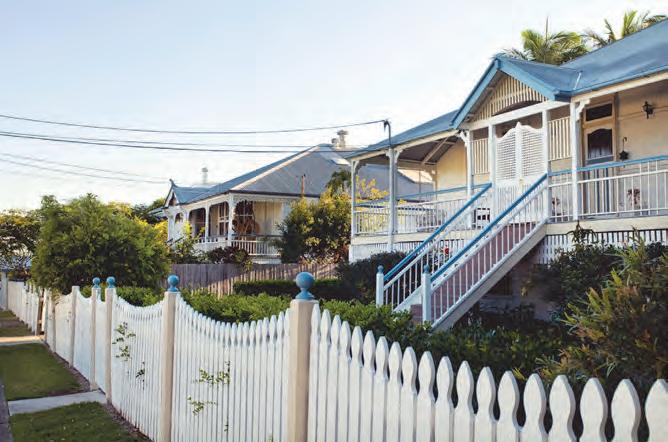





MANY people looking to retire often downsize when they move into an over-50s lifestyle resort. But that wasn’t the case for Steve and Susan Szekeres who bought one of GemLife Gold Coast’s Premium Emerald Collection homes.
“When we saw the plans of the home design, the block and its position surrounded by the bushland views of the protected koala corridor, it was exactly what we wanted, and we bought it straight away,” Susan says.
“That was about two-and-a-half years ago. It was even the same size as our family home on a Mudgeeraba acreage, so we were not even downsizing for our retirement.”
Susan is looking forward to the completion of her new home with husband Steven, 73, who previously worked creating special effects for films.
The pair are impressed not only with their own home, but also all the Emerald Collection residences at GemLife Gold Coast.
“All the homes come with elevated designs and upmarket bespoke inclusions and, like ours, are located on prime sites,” Susan says.
“We couldn’t be more delighted. We just love the high ceilings, huge butler’s pantry, high-quality floor coverings, spaciousness, impressive fittings and outstanding outlook plus more.
“Everything has been done to such a fabulous quality.
“Our new home is one of a kind, designed specifically to suit our large




block, and is everything we ever wanted.
“It is not split-level like many of the other Emerald Collection homes, but it does share the amazing views they capture because we are positioned up high at the top of a hill.”
GemLife’s Emerald Collection of exclusive premium homes has been created to meet the expectation for luxurious over-50s living for the sophisticated buyer.
Emerald Collection homes are available to inspect at GemLife resorts at the Gold Coast, Tweed Waters and Rainbow Beach in Mid North New South Wales.
Call 1800 560 768 or visit GemLife.com.au/emeraldcollection
AS AUSTRALIA’S population ages, the journey into retirement living is becoming a pivotal chapter for many.
While this transition can evoke a mix of excitement and apprehension, it’s also an opportunity to redefine what it means to live well in your golden years.
Navigating the retirement and aged care landscape can be daunting, with options ranging from independent living communities to assisted care.
This transition is more than just a lifestyle change: it’s a chance to embrace new experiences and prioritise your wellbeing.
Many modern facilities prioritise autonomy while providing essential support, allowing residents to enjoy a vibrant community atmosphere tailored to their interests.
Retirement Care Solutions specialises in supporting this transition, helping you navigate the complexities of finding the right retirement living option or aged care placement that meets your individual needs.
Experienced consultants offer personalised guidance, ensuring you explore options that align with your lifestyle and preferences.
One client, Bette, shared the experience.
“My heartfelt thanks to Savannah for her time given to myself and my husband, listening to our needs and the best way to move forward with my husband’s care,” she says.
“Her knowledge of the industry, the
THERE’S A GADGET TO MAKE LIFE EASIER AND
WE ALL age differently. Simple, daily tasks can begin to present challenges, in ways you never expected or were warned of.
Mounties Care Mobility and Independence is a business built on a clear idea: helping to meet those challenges.
Everyone knows wheelchairs, walkers and scooters, and Mounties Care has the full A to Z of those.
Lift chairs and adjustable beds are a







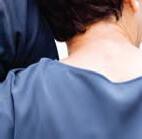





time spent on home visits, inspections, phone calls and the endless paperwork was never too much.
“Savannah was easy to talk to. She was friendly and genuinely caring.
“I cannot thank her enough. It was the best decision to get her to help us through the process.”
Retirement living is about embracing change and crafting a fulfilling life. If you’re considering this transition, reach out for help to navigate this journey, ensuring your golden years are filled with joy and the care you deserve. Call 1300 245 502 or visit retirementcaresolutions.com.au
little more niche, but it doesn’t take much to persuade someone of their benefits once they indulge in the cool comfort of a gel mattress or the soothing massage of a perfectly configured chair.
But the real secret is that there’s still so much more. Kettle tippers, sock sliders, garden kneelers, key turners, automatic bottle openers, talking clocks, bendable cutlery, threading helpers, lotion appliers – the list is endless. There’s a gadget out there for just about anything.
Mounties Care says there’s nothing like seeing the relief of a customer when they realise there’s yet another niggling problem that staff can help with.
So, Mounties’ advice is to do that highly specific Google search, ask that strange question of your GP, and scour every page of product catalogues because, in all likelihood, there’s a gadget out there for you, too.
Visit mountiescaremobility.com.au or call 1300 622 633.
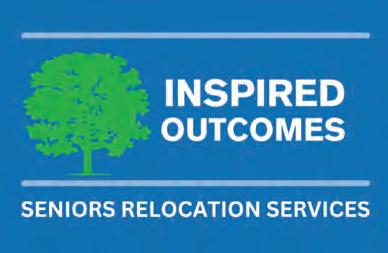
SHE has lived a full and joyous life, crossing the globe and living in England, Africa and Australia.
Now Joan Hunter has celebrated another major life milestone.
Joan, who lives in the Carinity Hilltop aged care community at Kelvin Grove, turned 100 on September 22.
Born in Newquay in Cornwall, England, in 1924, she was called up to work in a munition factory, manufacturing parts for World War II bombs.
After the war ended, Joan left England for Africa with her first husband Jack Robertson.
They settled in Cape Town with their son Keith.
After their marriage ended, Joan met Noel Hunter who became her second husband.
The couple moved to South Rhodesia (now Zimbabwe) with Keith. Their daughter Gail was born in Northern Rhodesia (now Zambia) in 1960.
Shortly after, the family moved back to Cape Town. Noel was a hotelier and, over the

years, he and Joan opened several large hotels in Zimbabwe and Zambia.
Joan, Noel and Gail moved to Australia in 1970. Keith, who was then aged in his 20s, elected to stay in South Africa.
Noel and Joan found it morally difficult living under the apartheid regime in South Africa. “My parents and I have loved living in Australia.
Joan says it’s the best country in the world,” Gail says.
In Africa and Australia, Joan worked as a beautician, mostly for the Helena Rubenstein cosmetics brand. She also supported Noel in opening and

running several hotels here.
Joan has always loved reading and watching movies, and still enjoys watching old films.
She became a committed Christian in her late-50s, and her faith has “been the bedrock of her life since”.
Gail and her mother lived very happily together at The Gap until Joan moved to Carinity Hilltop in 2018, where “she’s been living contentedly ever since”.
“Joan is a very special person – loving and kind, with a witty sense of humour. She is much loved and appreciated by extended family and special friends,” her daughter says.
Joan, who has always had a great interest in the British Royal Family, was delighted that King Charles – as well as the Australian GovernorGeneral and Prime Minister –sent their congratulations for her 100th birthday.
She enjoyed two birthday celebrations: one with friends at Carinity Hilltop and another party with family.
WAYFINDER Women is dedicated to supporting solo female travellers and removing barriers that prevent women from experiencing the joy of travel.
The new initiative softlaunched on July 4 in celebration of Wayfinder Travel’s 8th anniversary.
The business, in collaboration with renowned UK luxury travel brand Riviera Travel, hosted 55 special guests at a quintessentially Britishthemed afternoon tea at The Newstead Residences, Brisbane, a local independent living village.
The event aimed to raise awareness of Riviera Travel’s premium offerings in the Queensland market. Curated by Sarah Webster, founder of Wayfinder Travel and a UK native turned Queenslander, the menu captured the essence of British tradition. Guests enjoyed performances from the talented string duo, Paradiso Strings, creating an elegant and relaxing atmosphere.
A highlight of the event was an interview, conducted by

Sharon Hando with Sheila MacDonald, a 75-year-old medieval re-enactor (known as Mary Clifford at public events).
Sheila, a breast cancer survivor, recently sailed solo on Riviera Travel’s Medieval Germany cruise and shared her remarkable story of strength and adventure. Sheila, who embodies the spirit of independent female travellers, is also the first ambassador for Wayfinder Women.
As Sarah, the in-house travel advisor at The Newstead Residences since 2018, noted: “Most of my bookings are for women travelling solo or with friends. Wayfinder Women is designed to meet this growing demand by offering curated travel services and highlighting the many solo travel deals available for the Australian market.”
The event also served a charitable purpose, raising $1400 for Aveo’s Project Pink: an initiative that funds breast cancer research.
Email Sarah@ wayfindertravel.au or visit wayfindertravelandcruise.com
● Fixed rate with no hidden fees
● Fully licenced Property Manager
● Regular routine inspections with photo reports
● Flexible owner payments, and same day statements
● Strict property application processes with thorough tenant checks
● Limited number of managed properties to ensure top quality service





HERE are some dates to keep in mind this month.
• November 5: Melbourne Cup Day; Guy Fawkes Night
• November 11: Remembrance Day
• November 13: World Kindness Day
• November 14: World Diabetes Day
• November 16: International Day for Tolerance
• November 17: International Students’ Day; World Day of Remembrance for Road Traffic Victims
• November 19: International Men’s Day; World Toilet Day
• November 20: Universal Children’s Day
• November 21: World Television Day
• November 25: White Ribbon Day domestic violence awareness
• November 29: Black Friday shopping event
• November 30: Computer Security Day; last day of spring.


Serves 4
This salad has a balance of sweet and salty. High in fibre and folate, this salad not only looks good, but is bursting with goodness, too.
Ingredients:
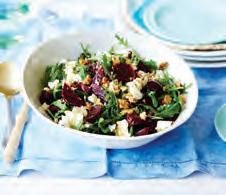
• 200g mixed salad leaves
• 250g baby beetroot, cut in half
• 150g reduced-fat feta cheese
• 3 tbsp (60ml) caramelised balsamic vinegar.
Method:
1. Mix the salad, beetroot and crumbled feta together in a bowl.
2. Drizzle with the caramelised balsamic vinegar. Optional: Sprinkle with 50g chopped walnuts (87 calories and 0.4 carbs/serve) for extra crunch. If you have them, walnuts add a lovely texture to this salad and complement the smoothness of the feta. In addition, they are significantly higher in omega-3 fat than any other nut. That’s the healthy fat that is also found in flaxseeds and fish oil.
This recipe is from 4 Ingredients More Diabetes: 4ingredients.com.au/products/4-ingredients-morediabetes. The book is on sale for $24, including free postage Australia wide.

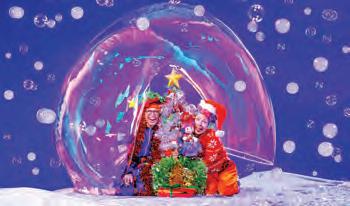
REDLAND Performing Arts Centre has a sled-full of festive entertainment to get you into the Christmas spirit.
Kicking off the season will be Christmas Actually. Libby O’Donovan leads an all-star cast delivering hits from the beloved holiday classic Love Actually
Then, JD Smith, from The Ten Tenors, brings his Christmas Celebration to the RPAC stage, joined by special guest Shandelle Cooke and a four-piece band.
You can treat the kids to The Bubble Show, set in Santa’s Bubble Department, and join Mr Barley, the quirky farmer in The Hoarderculturalist, for a tale inspired by A Christmas Carol A free light and sound show at dusk – complete with dazzling lights and bubbles – is also part of the festive program.
WHERE: Redland Performing Arts Centre, 2-16 Middle Street, Cleveland. WHEN: Saturday, November 30, to Saturday, December 21, at various times.
TICKETS: Visit rpac.com.au or call the Box Office on 3829 8131.






Christmas Actually


All the hits from the holiday Love Actually, performed live! SAT 30 NOV, 8PM








tually iday classic edlive! ioon

A Christmas Celebration
Brisbane Excelsior’s Big Brassy Christmas




Join JD Smith from the Ten Tenors, plus a live band, for a night of family favourites. THU 5 DEC, 7.30PM
Experience the bold sounds of Australia’s top brass band in a festive showcase. SAT 21 DEC, 7.30PM


AFTER a sellout 2023 season in Brisbane, Queensland Theatre’s award-winning Drizzle Boy is on its way to Redland Performing Arts Centre for one night only.
Join Drizzle Boy on a deeply moving and enlightening rocket ride as he takes back his narrative from a world of misunderstandings with irreverence and audacity. This smash-hit production made history by debuting Australia’s first-ever neurodivergent character portrayed by a neurodivergent actor on a main stage.
It stars Daniel R Nixon (A Chorus Line, On The Town) as Drizzle Boy, with Judy Hainsworth (Fourteen, The Twits) and Anthony Gooley (Bernhardt/Hamlet, Boy Swallows Universe) as his parents.
WHERE: Redland Performing Arts Centre, 2-16 Middle Street, Cleveland.
WHEN: Thursday, November 21, 7.30pm.
TICKETS: $19-$39 by calling the Box Office on 3829 8131 or visiting rpac.com.au (booking fees are $5.30 by phone and $6.40 online per transaction).





EXPERIENCE the magic of the world’s mostbeloved nanny as Mary Poppins comes to life on stage.







Queensland Musical Theatre’s production features Georgia Mercer in the title role, and Ray Gillmore as Bert.

Mercer brings charm, grace and soaring vocals to the role of Mary. Having recently completed her Bachelor of Classical Voice at the Western Australian Academy of Performing Arts, Mercer will embody everyone’s favourite practically perfect nanny.
Gillmore as Bert is the lovable chimney sweep with a heart of gold. Gillmore’s energetic performance and engaging personality are sure to delight audiences, creating a memorable pairing that will light up the stage.
Mary Poppins is a timeless story of adventure, family and imagination, based on the books by PL Travers and the classic Walt Disney film.
WHERE: Twelfth Night Theatre, 4 Cintra Road, Bowen Hills.
WHEN: November 15-24 at various times.
TICKETS: $49.50, via premier.ticketek.com. au/shows/show.aspx?sh=POPPMARY24 or call the Box Office on 3252 5122.
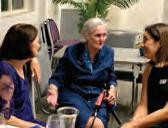




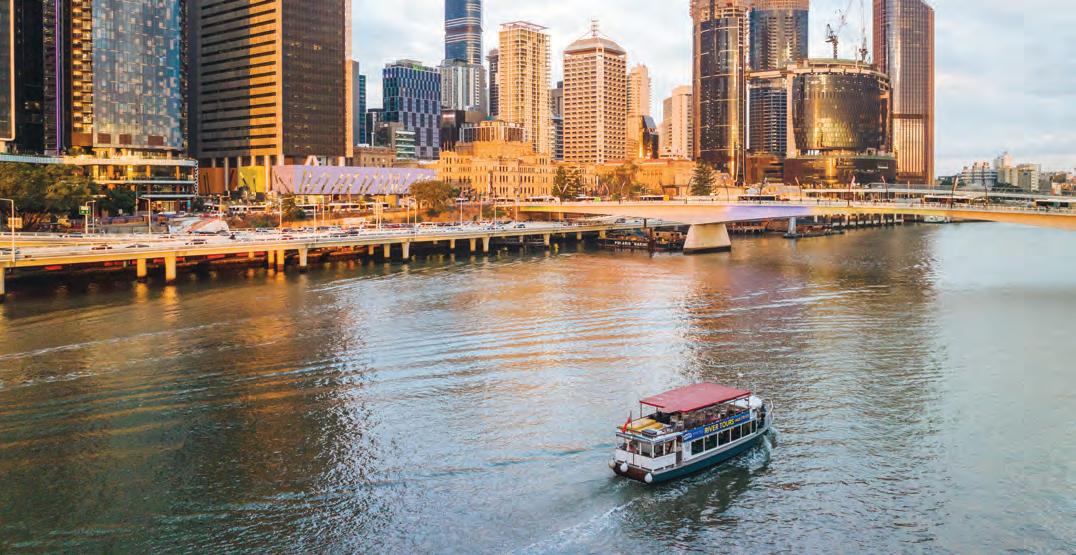


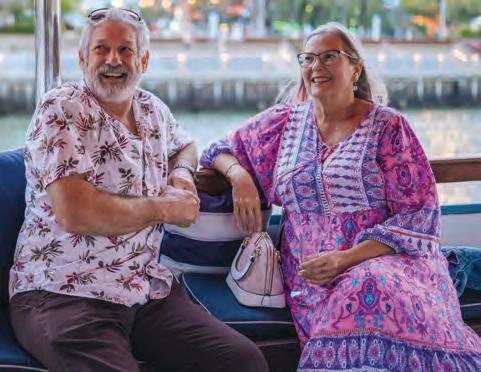
















coast. As unruly Indian Ocean waves crashed over massive granite boulders on the beach, and monkeys swung gleefully in the tree branches above us, threatening to steal my dinner before it reached the table, Anuradha delicately sprinkled a variety of spices over meats and vegetables. I learned how to combine them sparingly. The emanating aromas stirred my hunger glands in anticipation of the ruby tandoori chicken dip, coconut sambal, green bean curry and tempura prawns developing before my eyes.
If you’re a foodie like me, you’ll love Sri Lanka. Rice to roti, sensational street foods, the freshest vegetables, tenderest meats, tastiest curries, and succulent seafood –they’re all served in equally unique settings with accompanying beverages.
I enjoyed sunset dinners on pristine stretches of crystalline sandy beaches and atop rusty red cliffs, the gentle sea breezes tousling my hair while I watched the unbridled surf roll in.
From crab feasts to street food, Nannette Holliday sharpens her culinary credentials in a 12-day tour of an island nation with a colourful history.
The soft, juicy, tender morsels of crab and tangy chilli-garlic sauce are coating the inside of my cheeks. I’m salivating in crablicious heaven.
If only the vibrant tangerine walls of Colombo’s 400-year-old, repurposed Dutch Hospital mortuary could talk.
This is the nightly cracking, crunching, slurping and sucking as patrons gouge every ounce of gorgeous juiciness from the lanky red shells, happily enjoying the mess as they hoe into their deliciously fresh seafood feasts at the Ministry of Crab.
My ever-so-helpful waiter Omai came to my rescue by expertly cracking my show-stopping, two-kilo monster Crabzilla, allowing me to enjoy every mouthful and then soaking up the sauce with a mountain of freshly oven-baked kade bread. In 2011,
chef Dharshan Munidasa established Ministry of Crab because Sri Lanka exported its best crabs and seafood. This way, the celebrity television chef allows locals and visitors alike to enjoy them. And tonight, I’m ever-so grateful.
If you think Sri Lankan meals are endless rice and curries, think again.
Eating deliciously fresh crab wasn’t on the radar when I planned my 12-day holiday. But it’s been the perfect hoorah to an array of delightfully unique dining experiences around the island.
While Sri Lanka is renowned for its spices, they’re used to enhance the various dishes. I learned this from chef Anuradha Gunathilake during my private beach cooking class at Resplendent’s Wild Coast Tented Lodge on the island’s southeastern
I breakfasted on traditional fresh coconut and hopper eggs in historic heritage hotels, savoured sweet fresh fruits and street food samosas at Pettah Fresh Market, and Saravita wrapped in betel leaves at Galle Face Green night market. Then I toasted the sun setting on another glorious day in paradise with a local Rockland dry gin and canapes at Virticle by Jetwing rooftop bar in Colombo.
On a Float Negombo cruise across Negombo Lagoon, I was serenaded by a solo guitarist strumming delightful tunes as we

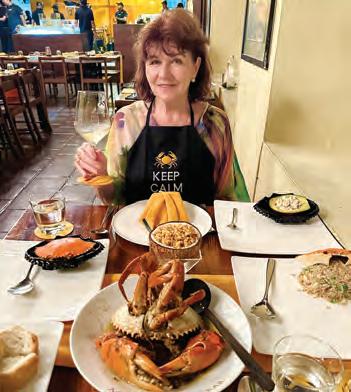
waded in ankle-deep cool water to our high cloth-covered tables to enjoy sunset drinks and snacks whipped up by our chef at a table beside us.
A seven-course gourmet dinner cooked in front of me by executive sous chef Ishara Wijesinghe, at Cape Weligama Resort’s fine dining restaurant Tableau, was the most memorable. From the exquisite, melt-inyour-mouth, zucchini-wrapped crab mousse to fresh butter-poached lobster tail, and Sri Lankan lagoon prawns atop tender pink beef fillet strips, my stomach and mind were in gastronomic heaven.
But when Thilina, the Surf Bar manager at Cape Weligama, described Ceylon Arrack as their breakfast drink during a masterclass, I almost sprayed my mouthful during a fit of laughter. Arrack is like whiskey but naturally distilled from coconut flowers. Ceylon Arrack is top of the range, and while smooth, my preference remains the second: the Vat 9 Family Reserve. Neither will replace my champagne for brunch.
After a guided Dunkeld Tea Factory Tour in Sri Lanka’s cool and refreshing UNESCO World Heritage Central Highlands, I also have a new appreciation for tea. Bernard’s narrative and tea tasting of Dilmah’s complete range was an eye-opener, especially as it’s still handpicked on the surrounding steep and mountainous slopes.
The Central Highlands is unlike other parts of this stunningly beautiful tropical

island. Dubbed ‘Little England’, it features many quaint British colonial-style towns and buildings nestled among the fertileladen hills, about 1830m (6000 feet) above sea level. Each is a lasting tribute to the country’s colonial past.
Whether you travel to this region by train or drive the winding mountain roads, you will encounter numerous cascading waterfalls, deep gorges, clusters of whitewashed houses tittering precariously along the slopes, and verdant tea plantations snaking across the steep hillsides.
Cloaked in its jungle greenery, the Central Highlands is a treasure trove of old and new, just waiting to be unearthed. Discover the history of the old capital of Kandy, or take a tuk-tuk from Ella to spy the blue train crossing the Insta-famous Nine Arch bridge. Stop for a cup of pekoe tea and step back in time at the nearly 200-year-old Grand Hotel in Nuwara Eliya.
I also didn’t expect my safari in Yala National Park to be equally as good as any I’d experienced in Africa. Yala is the country’s second-largest park, covering 979 sq km, and is home to the largest population of leopards.
We explored many habitats, from jungle, semi-arid scrublands, grassy plains, and scenic coastal lagoons to scattered historical ruins and artefacts. I revelled in the beauty of the countryside, families of Asian elephants, water buffalo, spotted

deer, sloth bears, peacocks, white-breasted sea eagles and more.
Although a mere drop at 65,610 sq km, cocooned by the Indian Ocean, this small island, previously known as Ceylon, is so diverse and packed full of welcoming surprises that no matter where you go, what you see and do, you’ll feel like you’re enjoying multiple holidays.
HOW TO GET THERE:
A 10-hour direct flight with Sri Lankan Airlines to Colombo’s Bandaranaike International Airport daily from Melbourne and Tuesday, Friday, Saturday and Sunday from Sydney. Visit srilankan.com
WHERE TO STAY:
Colombo, Radisson Colombo, Marine Drive with a comfortable rooftop lounge, bar, pool and restaurant overlooking the Indian Ocean. radissonhotels.com/en-us/hotels/ radisson-colombo
All-inclusive Resplendent Resorts, the only Relais & Chateaux resorts in Sri Lanka – Ceylon Tea Trails, Wild Coast Tented Lodge and Cape Weligama. resplendentceylon.com
WHAT TO DO:
Let local Sri Lankan tour operator Sargia curate your journey. sargiasrilanka.com

STEP aboard an AmaWaterways river cruise, and you’ll find yourself at the intersection of history, innovation and sheer passion for exploration.
Celebrating more than 22 years of redefining the river cruise experience, AmaWaterways has become synonymous with luxury, innovation and an intimate connection to the rivers that weave through some of the world’s most stunning landscapes.
From the moment you step aboard, you’ll feel the rhythm of the river carrying you to the heart of Europe’s most enchanting destinations. It’s more than just innovative ships – it’s about waking up every morning to a new vista, as grand cities and storybook towns reveal themselves along Europe’s iconic rivers.
Whether you’re exploring the

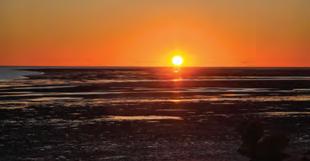
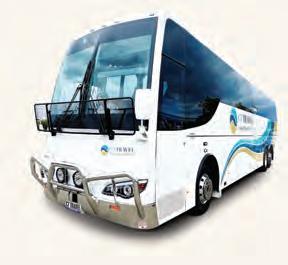
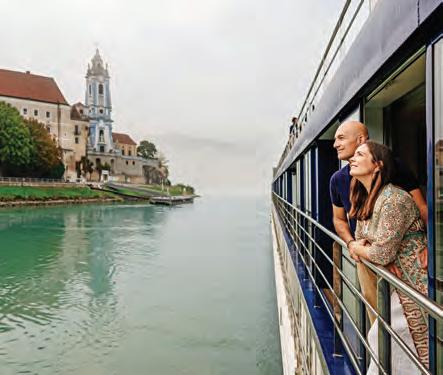
picturesque gardens of Monet in France, wandering the medieval streets of Strasbourg or admiring the castles that line the Rhine, AmaWaterways takes you beyond the surface, offering an immersive journey into the heart of each destination.
AmaWaterways itineraries are thoughtfully curated to connect you with the essence of each place. Every excursion is designed to bring history, culture and natural beauty to life. Picture yourself biking through Austria’s scenic Wachau Valley or hiking to the ancient fortress of Dürnstein, where Richard the Lionheart was once held captive. From the grand palaces of Budapest to the melodic hills of Salzburg, AmaWaterways ensures that every moment feels like a new discovery. Contact your local Travellers Choice agent to save up to $3000 per stateroom, with a complimentary upgrade and $50 onboard credit. Visit travellerschoice.com.au
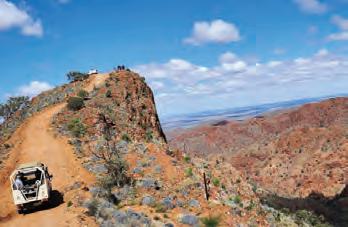
FEBRUARY 2025
Golf Tour - Norfolk Island (8 Days)
MARCH 2025
O’Reillys (4 Days)
Carnarvon & Wallaroo #1 (8 Days)
APRIL 2025
Norfolk Island (8 Days)
Alpine High Country to Murray Delta (12 Days)
MAY 2025
Red Centre to Top End (18 Days)
JUNE 2025
SW Qld Outback Loop (12 Days)
Lightning Ridge (7 Days)
JULY 2025
Carnarvon & Wallaroo #2 (8 Days)

AUGUST 2025 Nth Qld Savannah (12 Days) Fraser Island Whale Watch (4 Days)
SEPTEMBER 2025
Toowoomba CoF (4 Days) Flinders Ranges (11 Days)
OCTOBER 2025
Princess & Kangaroo Island (11 Days)

MELBOURNE
AMONG TOUR HIGHLIGHTS
IMAGINE a coach tour that combines the history and culture of Melbourne with the spectacular scenic beauty of the Great Ocean Road.
This is Coastal Variety Tours’ 14-day coach trip to the Melbourne International Flower and Garden Show, which departs on March 22 next year and includes a convenient home pick-up and return.
This tour will take you via the Pacific Highway to Coffs Harbour, Sydney and Albury, arriving in Melbourne in time for the Southern Hemisphere’s largest, much-loved horticultural event, located in the Heritage Listed Royal Exhibition
Building and Carlton Gardens, which are transformed into a lavish garden paradise.
Your itinerary comes complete with a Melbourne Cricket Ground tour.
Immerse yourself in the history and heritage of this world-class facility, as your guided tour explores the inner sanctum of the MCG: the VIP Long Room, cricketers’ changerooms and viewing room.
You also have free time to explore the Queen Victoria Markets and Melbourne CBD.
This trip next heads to Geelong: Victoria’s second-largest city and the gateway to the Great Ocean Road.
Experience scenic views while you journey through Bells Beach, Anglesea, Lorne, and the picturesque seaside village of Apollo Bay.
Then take in the breathtaking ocean sights of the Twelve Apostles and London Bridge.
From the ocean, you’ll journey to the historic mining region of Ballarat where you will see the Botanic Gardens’ begonia display at the Conservatory, plus the Tram Museum, before arriving at Daylesford: a major tourist holiday destination. Another tour highlight includes a paddlesteamer boat cruise on the Murray River at Echuca.
Call Coastal Variety Tours for a full Itinerary on 5530 2363 or 0437 436 722.
IT’S time to start making travel plans for next year, whether you’re thinking about the Southwest Queensland Outback, the rugged beauty and history of the Red Centre or heading offshore to Norfolk Island.
CT Travel has released its itineraries for 2025, offering an exciting range of tours, from short getaways to its two-week adventures.
“We have some really interesting tours lined up,” says Paul Brockhurst, from CT Travel. “One not to be missed is our tour exploring Southwest Queensland.”
The Southwest Loop will be over 12 days from June 9 next year and is an opportunity to cover the long distances the easy way. There will be plenty to see travelling by luxury coach through the heart of the Outback.
After visiting Miles, Roma, Charleville and Quilpie, guests will spend three nights at Toogunna Farm Stay near Eromanga.
Station tours and a red sandhill sunset dinner under the stars are just a few of the highlights. The Outback comes to life at sunset in a sea of red and orange and there’s no better place to see it than from the top of a sand dune with a glass in hand.
Then onto Eromanga – population 45 and the furthest town from the sea
MCG TOUR, APOLLO BAY, BALLARAT BERGONIA DISPLAY, TRAM MUSEUM, ECHUCA PADDLESTEAMER CRUISE, WARRUMBUNGLES, PARKES.
INCLUDES: Motel Accommodation, All Breakfasts and Dinners, All Admissions and Touring, Great Ocean Road, Apollo Bay, International Flower and Garden Show, MCG tour, Ballarat Botanical Garden - Bergonia Display at the Conservatory, Marble statues, Tram Museum and train ride, Echuca Murray River Paddlesteamer morning tea cruise.
HOME PICKUP AND RETURN: Brisbane, Redcliffe, Redlands, Ipswich, Gold Coast, Tweed Heads, Sunshine Coast, Caboolture.
GOOD MOBILITY REQUIRED FOR THIS TOUR.

in Australia. That night, guests ‘dine with the dinosaurs’ in the Dinosaur Museum with the Tastes of the Outback Dinner.
From there, stop at the Noccundra Pub on the way to Thargomindah and Cunnamulla for overnight stays.
On arriving in St George, a river cruise on the mighty Ballon, a tour of The Anchorage Homestead, wine tasting at Riversands Winery and a Cotton farm tour means a two-night stay.
From there, travel to Dirranbandi for a guided visit of Cubby Station before heading to Goondiwindi for the final night.
“These are the little spots on the map that have so much to offer and are on many a bucket list but can be a challenge for many of us to get to,” Paul says.
“A spacious, modern, air-conditioned coach is the most comfortable and safest way to travel the long distances on our highways and byways.”
Visit cttravel.com.au for full details or call 5391 1648.
www.coastalvarietytours.com.au










KANGAROO ISLAND, GREAT OCEAN ROAD, ADELAIDE CITY, ADELAIDE ZOO, VICTOR HARBOUR, BAROSSA VALLEY, BROKEN HILL.
HOME PICKUP AND RETURN: Brisbane, Redcliffe, Redlands, Ipswich, Gold Coast, Tweed Heads, Sunshine Coast, Caboolture.




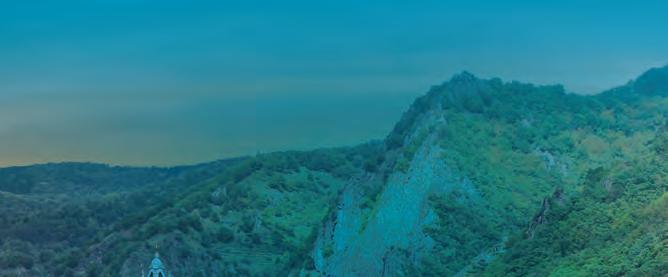



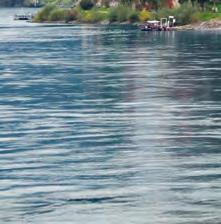

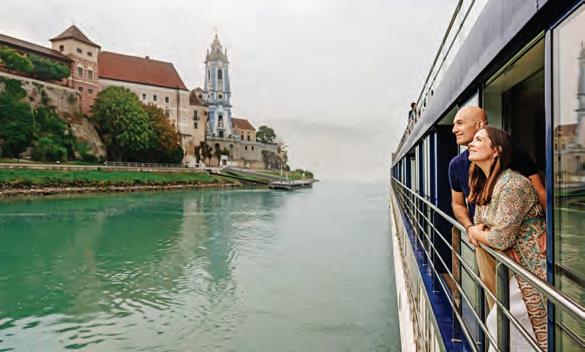
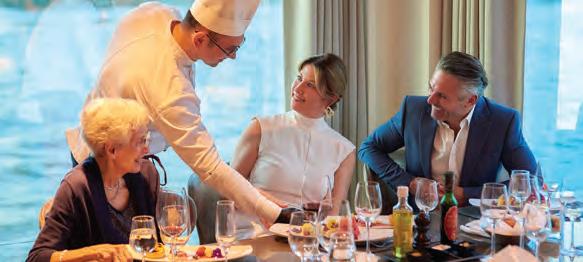



$3,000 Cruise Savings per stateroom
Complimentary Stateroom Upgrade*
US$50 Onboard Credit per stateroom*

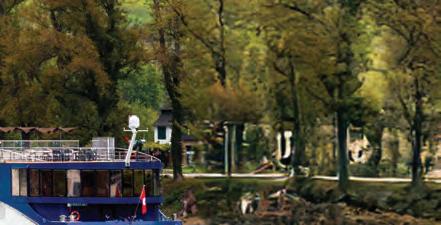


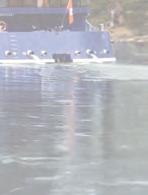


Step aboard an AmaWaterways river cruise and feel the rhythm of the river asitguidesyouthroughtheheartofEurope’smostenchantingdestinations as it guides you through the heart of Europes most enchanting destinations

this storied river has inspired generations of artists, poets and musicians.
Highlights Budapest • Bratislava • Vienna • Weissenkirchen • Grein • Linz • Passau • Vilshofen
Valid for travel Select dates 17 March - 27 December 2025 7-night

Discover fairytale castles, historic vineyards and the stunning remnant of a world frozen over with glaciers as part of this dreamy Rhine River cruise.
Highlights Basel • Strasbourg • Ludwighafen • Rüdesheim • Cologne • Amsterdam
Valid for travel Select dates 12 May - 29 December 2025 from $5,088*pp

Cruise from the French capital, Paris, where energy sizzles, and let Normandy entice you with its stunning coastline, incredible food and artistic beauty.
Highlights: Paris • Les Andelys • Le Havre • Normandy Beaches • Caudebec-en-Caux • Rouen • Vernon
Valid for travel Select dates 25 April - 08 November 2025
7-night river cruise from $5,988*pp
BOOK WITH YOUR LOCAL TRAVELLERS CHOICE AGENT NORTH CLAYFIELD TRAVEL PROFESSIONALS - 3862 1215 • EAST WHY TRAVEL - 3245 6115 WEST DISCOVER TRAVEL & CRUISE - 3300 5300 INNER SOUTH JLW TRAVEL - 0422 293 387 • TRAVEL MASTERPIECE - 3367 1644
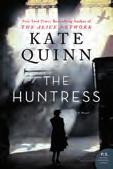
By Kate Quinn Historical fiction
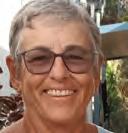
Reviewed by Jan Kent
FROM the acclaimed historical fiction writer Kate Quinn, this gripping novel has two timeframes: within Soviet Russia’s World War II and post-war Europe and Boston.
The aftermath of the war is the basis for this tale, revealing a fascinating story of perpetrators, survivors and the search for justice for those lost to the evils of war.
The strong women characters, developed skilfully by the author, lie at the heart of this book’s attraction for me.
Nina is one of the Night Witches: a regiment of female aviators flying night missions to deter German bombing missions, and contrasts with Jordan, a seemingly gentle aspiring photographer who becomes suspicious of her mysterious stepmother. Who is she?
This unfolds as the reader is drawn into the intrigue and suspense of this historically well-researched and accurate novel. As the only survivor of the evils of ‘The Huntress’, Nina joins a retired war correspondent in searching for Nazi war criminals.
This powerful book shines a light on an aspect of feminist history with which I was unfamiliar, but has given me a heightened awareness of the strength of the female spirit.

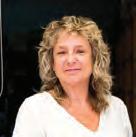
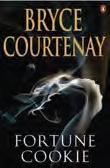

By Bryce Courtenay Thriller
Reviewed by John Kleinschmidt
THIS novel is very different from other books written by Bryce Courtenay and I have read almost all of them.
In a departure from his prolific Australian historical fiction stories, almost all of the action occurs in Singapore. I really enjoyed the characters in this tale of the Singaporean business world, (centred on a multinational advertising agency), the reform of Singapore, Chinese-Australian history and the influence of Chinese culture on success.
Our characters, Simon – an unattractive Australian-born Chinese, his hard-won lover Mercy B Lord, bosses The Wing Brothers and his alcoholic American work associate Dansford Drocker, each have a lead role in different sub-plots. This results in an unexpected and very surprising ending that I certainly didn’t see coming. Recommended.
By Stef Penney, Murder Mystery
Reviewed
by
Annie Grossman, of Annie’s Books on Peregian
By Allan Mason, Self-help book
KERRY Packer’s former accountant Allan Mason has released this year’s edition of his cult classic, Tax Secrets of the Rich 2024-25
In it, he debunks the myth that Australians will be better off after the Budget 2025 announcement of tax cuts.
Mason says there are two main reasons for this: firstly, the tax cuts do not counteract the inflationary effects of rising prices in daily essentials such as food or rental accommodation.
“We all know that as your income increases, so does your tax burden. It pushes you up into new tax brackets which means you pay more, even though from a purchasing point of view your money buys less. The tax office takes its share based on your gross income not real or inflation adjusted income,” he says.
He adds that there is an interaction between inflation, wages growth and tax increases through bracket creep, as the wages go up. The net result is

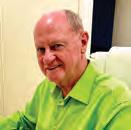
FROM the author of the wonderful novel The Tenderness of Wolves comes a murder mystery set in a small, close-knit village in Nordland: a remote part of Norway inside the Arctic Circle.
It’s the time of end-of-school celebrations know as ‘the russ’, and the parties are in full swing. The Arctic winter has almost passed, but as the village of Fauske gets ready for brighter days, a boy goes missing in the wilderness.
Conflicting stories make any solution very








difficult as villagers, old and young, muddy the waters while protecting their own secrets.
The novel has a terrific sense of place, and is wild and inhospitable, yet magnificently beautiful.
The residents are equally interesting – all with their own, sometimes closely guarded histories and secrets.
This is a strong piece of writing, full of atmosphere and tension.
always to the taxpayers’ disadvantage, especially in the past three years.
“From 2022 to projections for 2025, wage growth will be 14.4 per cent (average 3.6 per cent p.a.).



However, inflation over the same period is projected to be 19.2 per cent in total. So, the average worker in cost-of-living terms is 4.8 per cent worse off,” Mason says.
“The tax cuts do not address this.”
His book outlines how to play the tax game using structures to take advantage of different tax rates and includes 11 tax tips covering nearly every type of entity and tax situation a person can encounter.
Mason has more than 40 years of tax and accounting knowledge that has assisted his many thousands of corporate and private clients over the years, including some of Australia’s wealthiest individuals.
By Darrel Roche
I’M A Peregian Springs first-time author who has just published my first book at age 75.
I started writing it back in 1982 when I was a lighthouse keeper.
This is my true story of making wise decisions and some howlers, experiencing danger, making startling discoveries, and encountering memorable characters while absorbing the beauty of the mighty and majestic Australian Outback.
Have you ever yearned for freedom and adventure? Me and my two mates certainly did. And we experienced plenty of it during a 14-month odyssey through Outback Australia in 1970 and 1971 in my trusty Landcruiser.
Escaping suburban boredom and 9-to-5 monotony, where our only travel involved back-and-forth trips to work, my two companions and I cut the umbilical cord to our jobs, families and security to embark on a journey of 24-hour, seven-days-a-week freedom. This was in the era before computers and mobile phones dominated our lives. Come and join me on that adventure. Just leave all your cares and worries behind, jump onboard, and we’ll face the unknown together.
The book is available in bookstores including Annie’s Books on Peregian, Bermingham Bookshop or as an eBook at Amazon.
– Darrel Roche














Providing privacy and independence with the security of proximity to family. Glendale Granny Cabins provide comfortable, self contained accommodation for elderly relatives on the same site as the family home.
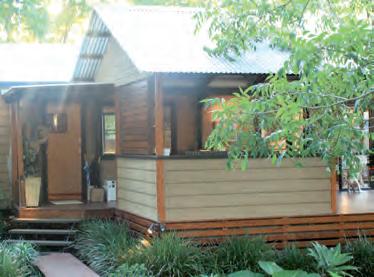


1. The region known as Transylvania is part of which country?
2. What nationality is former tennis player Kim Clijsters?
3. What is fossilised to form coprolites?
4. How many years make a millennium?
5. What is the name of the basket a fisherman carries to keep his fish in?
6. What was the name of The Beatles’ first album?
7. How many wheels does a dune buggy usually have?
8. Rank these from smallest to largest in area: Queensland, Western Australia, Alaska, Texas.
9. What was the main setting for the TV series called Das Boot?
10. What is the plural of the word ‘index’?
11. Which singer was born Anna Mae Bullock?
12. True nor false: there are no deserts in Europe?
13. What celestial object is Vesta?
14. Which British queen reigned for nine days?
15. Traditionally, what is sushi wrapped in?






16. Which Asian country hosted its first Formula 1 race in 2011?




17. Coined in 1988, what is Nike’s tagline?
18. Widely used in the late 20th century, what did VHS stand for?
19. What lake is overlooked by Australia’s High Court?



















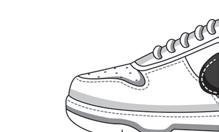

Lake Burley Griffin. 20. Formic.










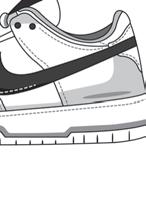
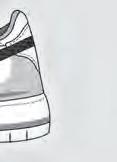


WORD

rt? mic? st It’ 18 em.tsSy 19 yelurB iffrG
20. What acid comes from ants: antacid, lactic or formic? 1. Romania. 2. Belgium. 3. Faeces. 4. 1000. 5. Creel. 6. Please Please Me. 7. Four. 8. Texas, Alaska, Queensland, Western Australia. 9. Submarine. 10. Indices. 11. Tina Turner. 12. False. 13. Asteroid. 14. Lady Jane Grey. 15. Seaweed.
duel, duet, dugite, dune, dung, dunite, dunlin, eluding, eluting, enduing, ennui, etui, genu, glue, glued, glut, glutei, gluten, guide, guild, guile, guilt, gulden, gunned, gunnel, indue, indulge, INDULGENT, indult, lieu, luge, lune, lung, lunge, lunged, lungi, lute, luted, luting, nude, nudge, tune, tuned, tuning, tunned, tunnel, ugli, undine, ungelt, ungilt, unit, unite, united, unled, unlet, unlined, unlit, untie, untied, until, untiled, untinged
degut, detuning, diluent, dilute,









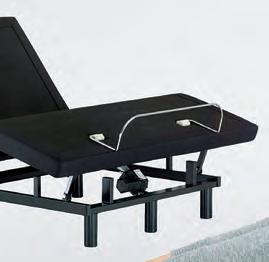











G U E T N N L
Using the nine letters in the grid, how many words of four letters or more can you list? The centre letter must be included and each letter may only be used once. No colloquial or foreign words. No capitalised nouns, apostrophes or plural words ending in “s”.
Most longsuffering or submissive(7)
Following(5)
Digitally generated imagery(1,1,1)
Ancient(11)
With excessive effort(11)
Come together(3)
‘Not on your – !’(5) 22 In part(9) 25 Dawn(7)
26 Witticism(7) 27 Silver medallists(7-2) 28 Japanese currency(3)
1 Hand it over(coll)(5) 2 Mountain ascent(4,5) 3 Japanese verse form(5) 4 Surgery chamber(7) 5 Japanese warrior(7) 6 Gracefully(9) 7 Discharge(5)
8 Tonguein-cheek(9) 13 Settler(9) 14 Political policy(5,4) 15 Evenly(9)
17 Greek musician who visited the underworld(7)
18 Distribute (food)(5,2)
21 Flaxen cloth(5)
23 Mediterranean island(5)
24 Arab state(5)

40 words: Good
51 words: Very good
62+ words: Excellent
Complete the list by changing one letter at a time to create a new word at each step. One possible answer shown below.
Today’s Aim: N AVA L
Every row, column and 3x3 outlined square must contain the numbers 1 to 9 once each.
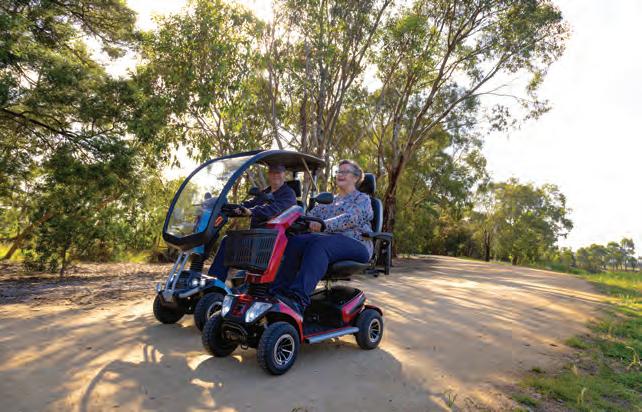

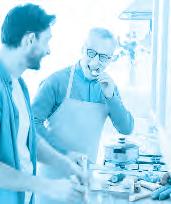












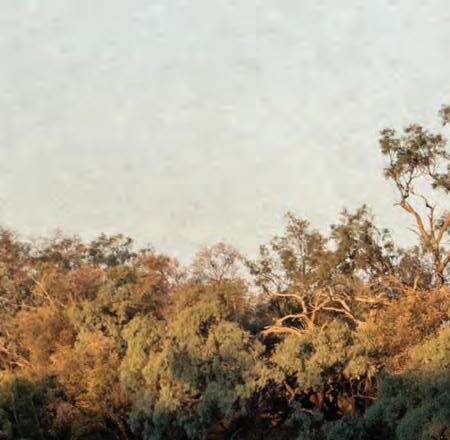
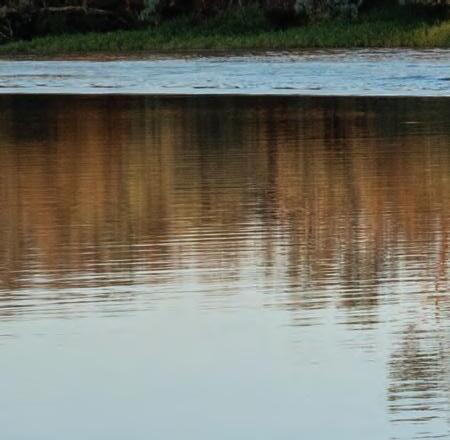
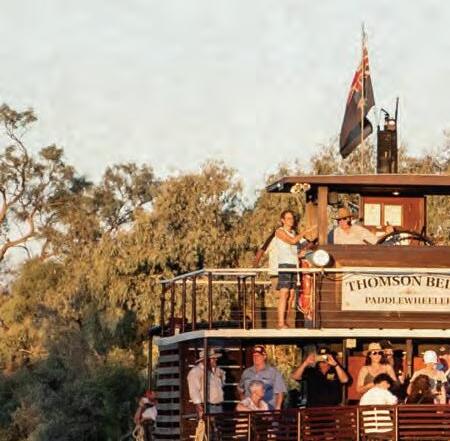
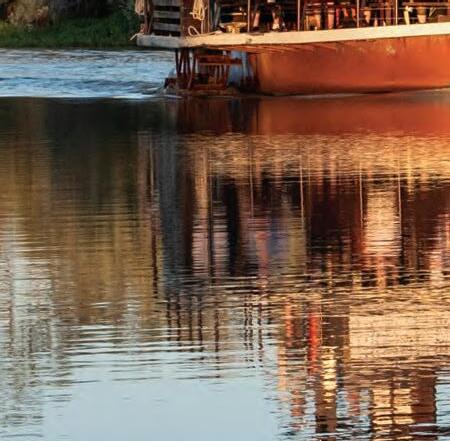


Cruise to sunset on a historic paddlewheeler, enjoy a traditional stockman’s dinner around the campfire, visit Nogo Station to hear how Australia was built on the sheep’s back, travel the old Longreach-Windorah mail track on a Cobb & Co stagecoach, and so much more *
